
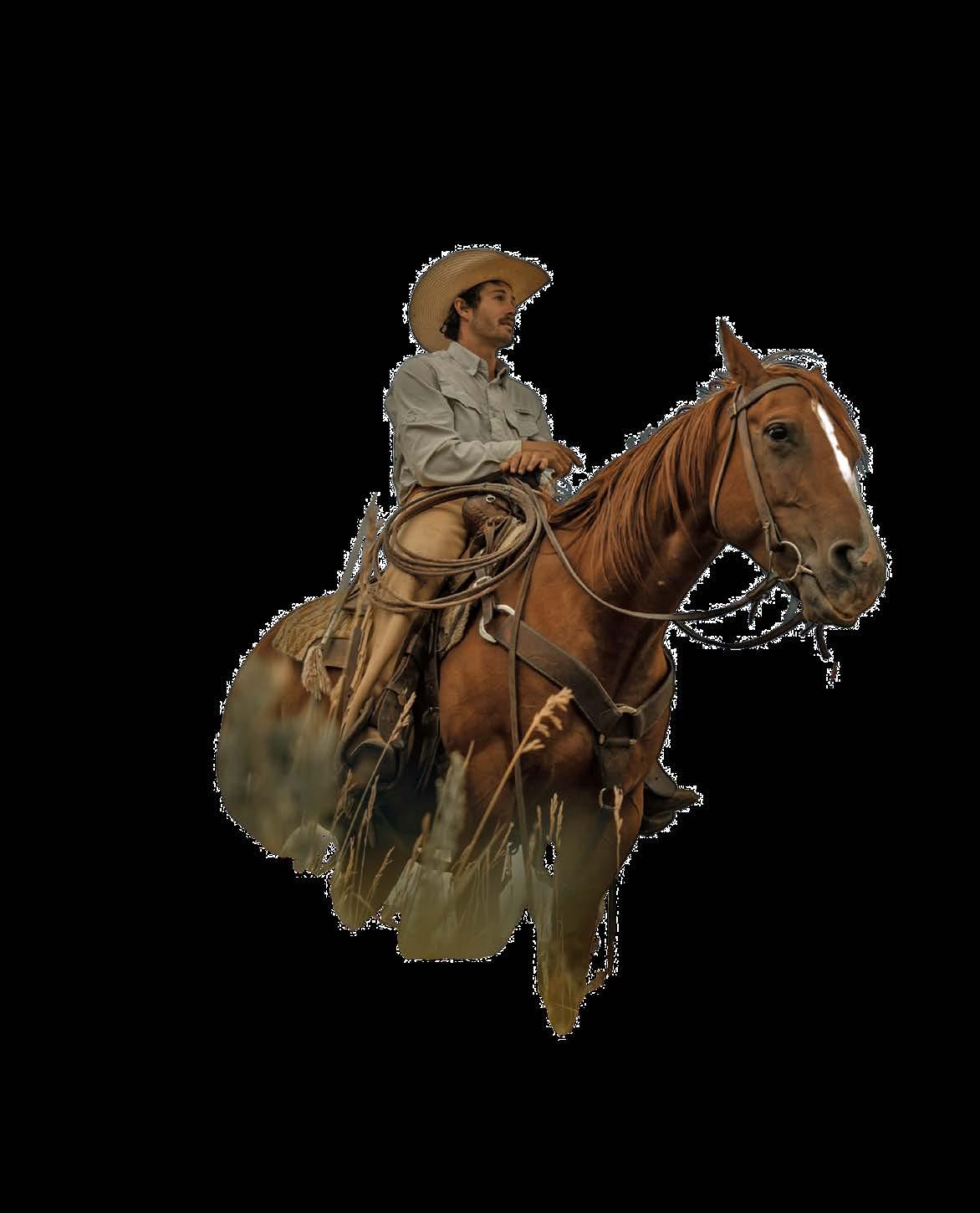

COUNTRY MUSIC Honoring Toby Keith Emily Ann Roberts FROM THE LENS The BonaFide Cowboy THE GLOBAL GROWTH OF Cowboy Culture The Rural Podcast Network 6 PRINCIPLES FOR THE MODERN COWBOY Global Cowboy Culture | Spring 2024 Subscribe at moderncowboymedia.com Frito Pie Western Leadership Mounted Shooting Sarah Dean Art Zeke Thurston Q&A Modern Homesteading Jenn Burbank Design FORNEY INDUSTRIES: The Forney Easy Weld line has the affordable & portable welders you need.

IT’S A WAY OF LIFE…
It’s what we say when someone falls off a horse, or gets bucked off a bull. It’s what we say after a long day’s work when there is still more to do. We say it, to remind ourselves to keep grit and tenacity at the forefront of our minds. You see, the rodeo and western way of life ain’t easy. It’ll test you and you’ll still love it, because it’s worth it and it is what inspires us every day. So, come on out and enjoy the tradition, the grit and the glory of the 105th annual Reno Rodeo.
JUNE 20-29, 2024
LIMITED TICKETS ARE ON SALE NOW RENORODEO.COM or by calling (775) 329-3877 x 132
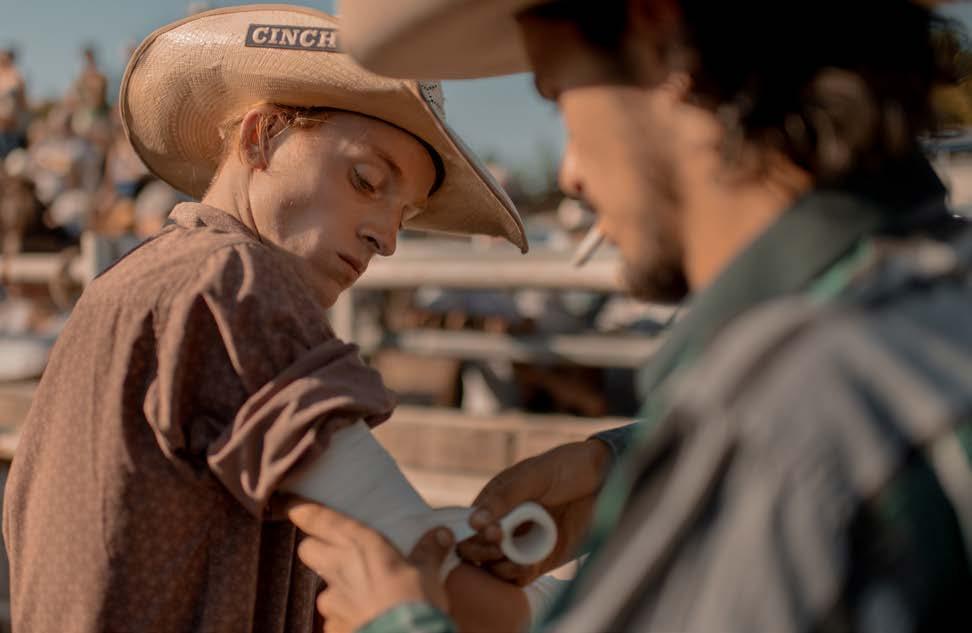
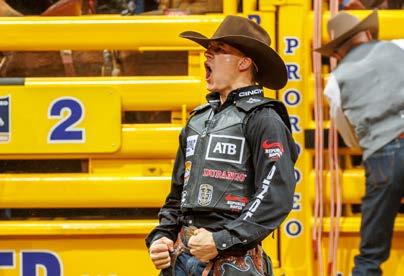



CONTENTs Welcome to Modern Cowboy Magazine 2 Global Exploration of the Modern Cowboy 4 Q&A with Shannon Kerr, Brazilian Barrel racer 6 A Closer Look at Rodeo in the Outback 8 Exploring the Cowboy Culture of New Caledonia 10 Exploring the European Cowboy 12 NFR rodeo athlete Q&A with Zeke Thurston 18 Arizona Mounted Shooting 22 Cowboy Frito Pie Recipe 26 The Gateway to Modern Homesteading 28 Introducing the Rural Podcast Network 30 6 Principles for the Modern Day Cowboy 32 5 Things Bucking Horses Wish You Knew 33 Forney Industries Father’s Day Gift Guide 34 Jenn Burbank Design 35 Emily Ann Roberts Profile 44 Western Art inspired by the horse with Sarah Dean Arts 46 5 Leadership Qualities in the Western & Agriculture 52 From the Lens: The BonaFide Cowboy 54 Tribute to Toby Keith 64 P.4 Q&A with Zeke Thurston P.18 The Gateway to Modern Homesteading P. 28 Western Art Inspired by the Horse Spring 2024 P. 36 Global Exploration OF THE MODERN COWBOY moderncowboymedia.com 1
































































M
N C
Y 2
ODER
OBWO


Welcome to Modern Cowboy Magazine
Welcome to Modern Cowboy Magazine, where we will explore the traditional aspects of the Western lifestyle from the lens of modern culture. Here at Modern Cowboy, we believe that you don’t need to live on a farm or ranch to wear a cowboy hat, we believe that you can embrace western living while also living in the city, and finally, we believe that “cowboy” is a way of life, a mindset, and a set of core values that is attainable by anyone. Being a cowboy means having a profound respect for the ones who paved the way before us and an opportunity to share this lifestyle with others, regardless of the walk of life they come from.
Modern Cowboy Magazine is a publication for the people, cowboy people that is. Our goal is to share stories that explore the ordinary, extraordinary, and everything in between.
While not a textbook definition, this is what we envision the true definition of a cowboy to be.
“Any man or woman who is blazing a trail all their own while displaying characteristics of integrity, respect, and boldness.”
Cowboy is a universal term known across the world. In this issue, you will hear stories from those living the cowboy way all around the world; from the Netherlands to Australia, Canada, Brazil, and everywhere in between.
As you flip through the pages, I encourage you to consider what being a cowboy means to you. Regardless of what walk of life you come from and where you’re going, you can embrace the cowboy way of life.
moderncowboymedia.com 3

GLOBAL EXPLORATION OF THE MODERN COWBOY
In the vast expanse of the cultural landscape, there exists a figure that embodies independence, resilience, and a frontier spirit—the cowboy. Originating from our American West, this iconic archetype has transcended its geographical confines to have an influence on cultures from around the world. However, as we delve into the international impact of the cowboy lifestyle, we uncover a narrative rich in both admiration and adaptation, revealing the complex interplay between tradition and innovation.
The cowboy lifestyle is steeped in rugged individualism and reverence for traditions that resonate deeply with people across diverse cultures. From the islands of New Caledonia to the tropical forests of Brazil, the image of the cowboy navigating vast landscapes evokes a sense of freedom and adventure that transcends cultural barriers. That is exactly what we hope to explore in this first issue of Modern Cowboy Magazine.
The cowboy lifestyle is not merely a relic of the past but a living tradition that continues to evolve in response to changing social, economic, and environmental dynamics.
Regardless of what part of the world you wander to, you will find stockmen, cowboys, herdsmen, and ranchers, all of whom exhibit similar traits of self-reliance and resourcefulness in their daily lives.
The globalization of the cowboy aesthetic has sparked a vibrant exchange of ideas and practices, leading to hybrid forms of cultural expression. In countries like Japan and Brazil, where rodeo sports have gained popularity, local interpretations of cowboy culture blend seamlessly with indigenous traditions, giving rise to unique subcultures that break the norm of what we fondly know of as American Cowboy Culture.
In light of all these complexities, exploring the international impact of the cowboy lifestyle invites us to reconsider our assumptions about identity, heritage, and belonging. It challenges us to embrace the diversity of human experience and to recognize the interconnectedness of our fates across borders and cultures. By engaging in open dialogue and mutual exchange, we can honor the legacy of the cowboy while forging new paths toward a more inclusive and resilient world.
4
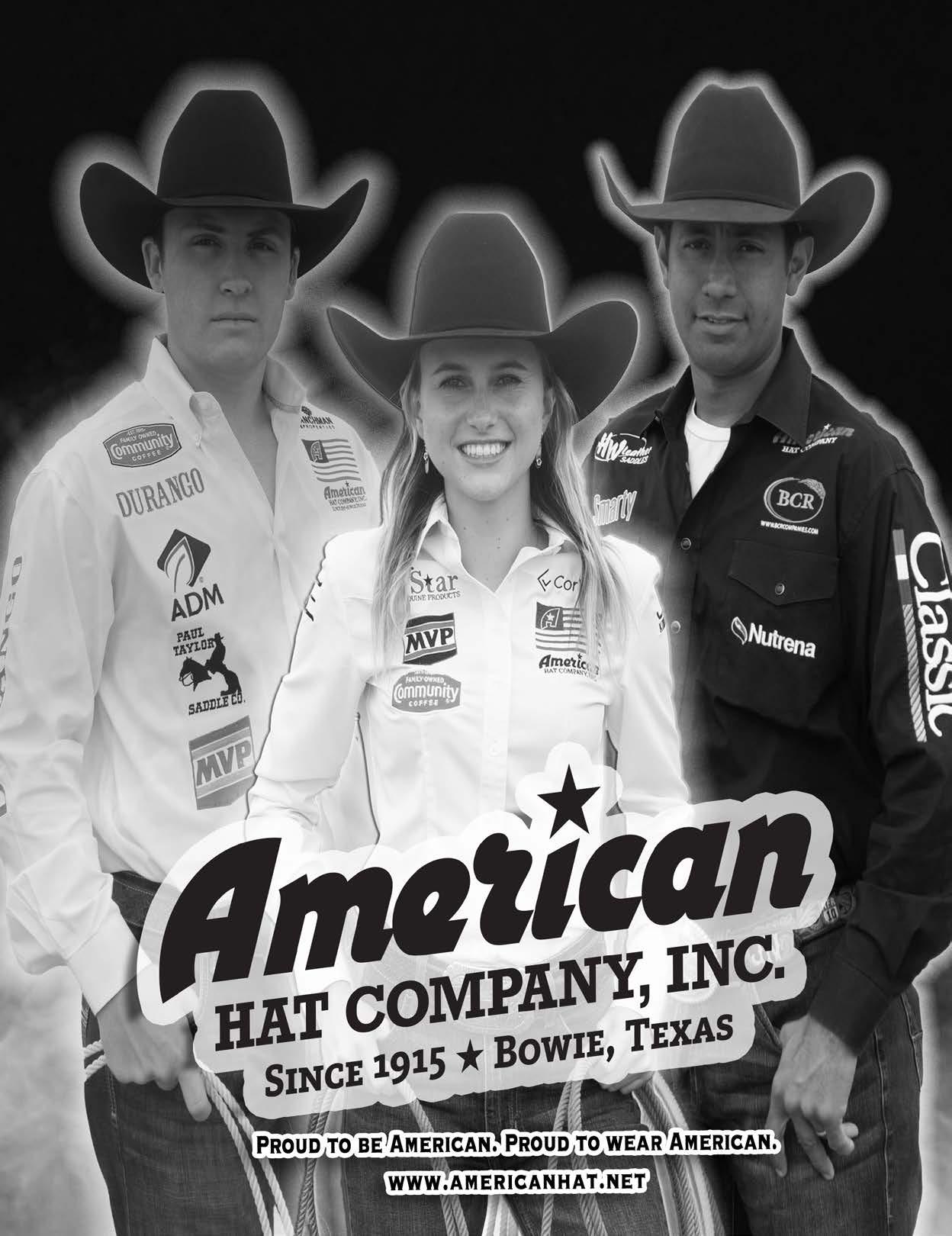
A Brazilian Spin on Barrel Racing and American Quarter Horses
Q&A with Shannon Kerr
Q&A with Shannon Kerr
BY KRYSTA PAFFRATH
In the heart of Brazil’s rich equestrian landscape, Shannon Kerr stands as a testament to the global allure and impact of barrel racing and Quarter Horse breeding. A renowned figure in the world of equine athleticism, Shannon’s journey from her roots in the United States to her current home in Brazil is a tale of passion, perseverance, and the transformative power of horses.
In this exclusive interview, Shannon Kerr offers a glimpse into her remarkable life, sharing insights into her upbringing, career trajectory, and the unique fusion of American barrel racing culture with the vibrant breeding scene of Brazil
CAN YOU TELL OUR AUDIENCE A LITTLE MORE ABOUT YOURSELF?
I grew up in Miami, Oklahoma, and graduated college at Oklahoma State University. Since a young age, I had always been crazy about horses, but grew up in a golf family. I was raised by my father who was a policeman, but unfortunately, he was killed when I was eleven. I was then raised by my grandparents until I was 21 when they passed away. It was my relationship with horses that helped me to cope and become the person I am today.
I played all kinds of sports and did every extra activity available but again, the passion for horses was stronger than anything else and eventually led the way to the life and career I live today.
HOW DID YOUR CAREER IN BARREL RACING BEGIN AND HAVE YOU ALWAYS RIDDEN QUARTER HORSES?
As a child who didn’t grow up with horses, I was never biased to one breed or discipline. I just loved them all. I got


my start, however, on racehorses. When I was 16 and could drive, I stopped at a local public race training track. I walked in and asked them if I could ride, so I actually started on racehorses. When I went to college I moved over to jumping and dressage and then eventually barrel racing. On the track, I rode a lot of QH and TB, and even for the jumping, it was also mostly TB horses with a few warmbloods.
I had a boyfriend who was a saddle bronc rider in the PRCA and I would go with him to rodeos. I was watching the rodeo one night and with popcorn in my hand, I thought I think I can do this. So I bought a cheap mare and trained her and then that same year filled my WPRA permit riding that mare and the rope horse of my boyfriend. I had trained both of them with the help of a retired Olympic Dressage coach. I didn’t have money to go to clinics and didn’t know anyone in the business, but with his help I was successful right off the bat. I was hooked when I went to a jackpot and actually won money and not just a ribbon.
WHAT DID THE TRANSITION TO BREEDING AND RIDING QUARTER HORSES IN BRAZIL LOOK LIKE?
When I came to Brazil, I had been successful in Europe and also in the USA, but when I arrived here I was in for an awakening experience. The level here is like none other. The amount of horses that run in the 1D and run sub 16 on standard patterns - doesn’t exist in the USA. The breeders here and the scale on which they do things can only be compared to maybe racehorse breeders in the USA. There aren’t very many people who work 9 to 5 and then have one or two barrel horses as a hobby. Everything here is really done on a professional level and on a large scale. You do see some of the rodeo girls that could be compared to the riders in the USA, but on the open show, it is all professionals.
So I had to change my perspective on everything. I had to let go of the concept that I had to do everything for my horse. It was hard to let go of that control, but if I hadn’t I wouldn’t be able to be successful here because I would have had to limit my number of horses and it allowed me to open up into other business opportunities that came about. So I had to let go of that mentality that I could do it all myself, instead, I became a manager of my horses. Changing that mindset was difficult but necessary.
6

I had to adapt to being one of the few women trainers in the industry and realize that I had to work even harder to be competitive against the men. But all of this made me a better trainer, and a better business person and has taken my program to a new level.
CAN YOU TELL OUR AUDIENCE A LITTLE BIT MORE ABOUT ANY DIFFERENCES BETWEEN THE QUARTER HORSES BRED IN BRAZIL VERSUS THE US?
The main difference I see is that here because of our rules, we can’t use medications on our horses during certain competitions. So Brazilians have developed training methods and fitness methods to try and combat the need for these medications during races where we have testing.
Our competition horses tend to be a lot leaner than horses in the States. I think the heat plays a big role in that and the idea here is you want your horse without any fat and only muscle in order to compete to try and that fastest time from them possible.
I will say our young horses mature faster than horses I have seen in the States. Our two-year-olds look a lot like four-yearolds. American horses catch up to our horses but horses 3 and under here in Brazil grow faster and bigger. Again, I think that is because of our climate. The horses don’t have to burn calories to stay warm in the winter and most farms here feed excellent grain, and supplements and have a lot of pasture. But in the end, the horses are the same. We do have the Shady Leo and some other bloodlines that we get to work with that are just now becoming available in the States and Canada.
THIS ISSUE
IS ALL ABOUT THE GLOBAL EFFECT THAT THE WESTERN LIFESTYLE HAS ON PEOPLE AND CULTURE. CAN YOU DESCRIBE WHAT LIVING A WESTERN LIFESTYLE MEANS TO YOU?
I am so blessed. Horses have taken me around the world and have allowed me to meet so many amazing and interesting people. Because of barrel racing, I speak 5 languages and literally have a global market for my horses.
I may live and ranch in Brazil and raise and train horses here, but my daily activity makes me feel like I am back in Oklahoma. Our ranch and my house are very Americanized and Brazilians just love Americans and the Western lifestyle we lead.
It’s an amazing life when you get to wake up to the Toucans and parrots and all the birds chirping in the morning and then put on your Ariat jeans and your boots and spurs. It means the world to me the Western lifestyle and as I said before, I am very blessed to get to live it every day.
WHAT IS SOMETHING YOU WISH MORE PEOPLE KNEW ABOUT BREEDING AND BARREL RACING QUARTER HORSES IN BRAZIL?
Brazil has imported the best of the best. The Brazilian government doesn’t allow just any horse to be imported. It has to meet certain standards set by the Agriculture Department and the breed association. The reason for this is to protect the breeders in Brazil and the idea is if the animal is imported it should be so to improve the breed.
So in the past 15 years, Brazil imported some great horses and bred the best of the USA to the best of Brazil. Brazil actually has some genetics that are so amazing in barrel racing. And when those genetics are crossed with the ones from the States, the results have been incredible.
The main example of this is the bloodline here in Brazil of the great stallion Shady Leo. Shady Leo is the sire of 4 of the top 15 stallions in Brazil and he is the number one broodmare sire. Shady Leo grandget has produced over $40 million here in Brazil and Brazil does not have the prize money that the USA does. So that is crazy impressive. So many breeders use the Shady Leo bloodline to cross on Dash Ta Fame, Frenchmans Guy, Fire Water Flit, etc, and the heterosis that came from that has been spot on. Producing some of the greatest barrel horses I have seen. Horses that are fast, calm, sound, and good-looking.
Shady Leo-bred horses tend to have good bones and good minds. Depending on the stallion, it also has good feet and incredible stamina and soundness.
I wish that Americans could understand the size of the breeding industry here and the seriousness of it. There are farms here that have anywhere from 300 to 1200 horses and breed 150 to 400 foals just for barrel racing a year. They are particular in how they breed and only try to breed to make a top athlete and champion. There are some, but not a lot, of that person that breeds a mare because they just love her and want a foal from her. Here its careful calculations with market demand and statistics are always at the forefront.
WHERE CAN PEOPLE FIND OR CONNECT WITH YOU ONLINE IF THEY WANT MORE INFORMATION ABOUT YOUR HORSES?
I am on most social media platforms. You can find me on Instagram, Facebook, and TikTok. Just send me a message, I am pretty good about answering every one. We also have a bed and breakfast and offer packages for people to come and ride with me or even just see the amazing countryside and Western lifestyle of Brazil.
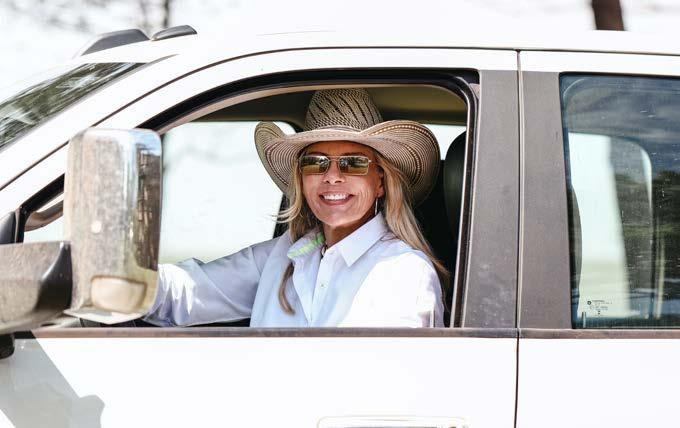
moderncowboymedia.com 7


A Closer Look at Rodeo in the Outback
We are all familiar with the faces and events of American rodeos, but what does rodeo look like in the great outback? Let’s find out!
BY ROBERT LANG
As the sun dipped low on the horizon, casting a golden glow over the dusty arena, the rider prepared to mount the massive bull, its muscles rippling with pent-up energy. With a confident nod to the cheering crowd, he tightened his grip on the rope and took a deep breath, ready for the exhilarating ride ahead. As the gate swung open, the bull exploded into motion, twisting and bucking with fierce determination, but he held on with steely determination, riding each wild move with skill and grit. After the buzzer, with a victorious whoop, the rider emerged triumphant, adrenaline coursing through his veins as he tipped his hat to the roaring crowd, a true cowboy conqueror of the rodeo.
In the vast expanse of the Australian outback, where red dirt stretches to meet the endless horizon, there exists a world where courage, skill, and tradition collide in a spectacle of adrenaline-fueled excitement. Welcome to the Australian Professional Rodeo, a captivating blend of raw athleticism, cowboy culture, and bush heritage.
The Australian Professional Rodeo Association (APRA), the national governing body for professional rodeo, calendar is
8
packed with rodeo events around the country. The APRA was formed in 1944 while the PRCA was formed in 1936. The APRA consists of 7 circuits, while the US has 13. For comparison, the United States is approximately 33% larger in mass, and 12 times larger in population. Their rodeo season culminates in the National Finals Rodeo held in November of each year.
Over the years, Australian rodeo has grown into a professional sport, with riders competing in a variety of traditional events such as Saddle Bronc Riding, Bull Riding, Bareback Bronc Riding, Rope & Tie, Steer Wrestling, Team Roping, Barrel Racing & Breakaway Roping. The familiarity doesn’t end there. Each rodeo starts with the Grand Entry. Rodeo clowns and rodeo queens are present as well.
“The origins of Australian rodeo are in the outback with the stockmen and drovers who pioneered the overland stock routes and the huge sheep and cattle stations of the north. No other sport can claim such a strong link to the day-to-day skills and practices of the working stockmen and drover. Riding a rough horse before starting a day's work, or working with wild cattle in the rough and ready bronco yards of an outback station was and still is a part of everyday life.” - A Quote From the APRA Website
Australian rodeo can be traced back some 150 years to informal matches between renowned horse breakers or rough riders and outlaw buckjumpers. Most stations boasted a horse that couldn't be ridden and any man who claimed he could ride a bit was sure to be put to the test.
The best rough riders went on to make a living from exhibitions and rodeo competitions. Today, their successors take their chances week after week on the highly competitive professional rodeo circuits in Australia, Canada, and the United States.
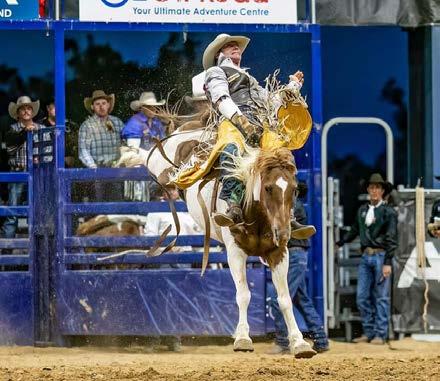
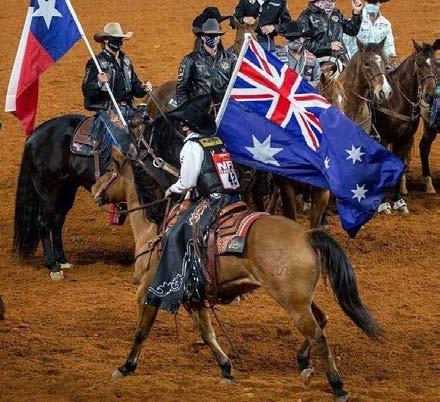

Rodeo is a traditional part of Australian outback life and its sporting heritage. It is also one of the social and sporting highlights of the year for many rural and regional communities, raising millions of dollars for community projects and charities.”
They have their share of impressive records as well. These include 93-point Bull Ride set by Fraser Babbington on McPhee Rodeo Co's "No Smokin" at Chiltern Rodeo 2008, 2.8 second Steer Wrestling set
by Danny McGuire at Tumbarumba Rodeo in 1986, 17.21 seconds Barrel Race set by Bridget Brandenburg at Mt. Isa Rodeo in 2000.
In the United States, we have our most famous rodeo athletes such as Ty Murray, Trevor Brazile, and Sherry Cervi. Some of the notable figures in Australian Rodeo include:
Troy Dunn is one of Australia's most celebrated bull riders. He gained international recognition for his talent and achievements in the sport, including winning the Professional Bull Riders (PBR) World Finals event in the United States in 1998. Dunn's success helped raise the profile of Australian bull riders on the global stage.
Shane Kenny is a highly accomplished all-around cowboy in the Australian rodeo circuit. He has won numerous championships and titles in events such as steer wrestling, team roping, and tie-down roping. Kenny is well-respected for his versatility and skill across multiple rodeo disciplines.
Darren Clarke is a bareback rider who has won numerous Australian Titles and has also been a highly successful competitor in the USA qualifying for the NFR.
Glen O’Neill is a champion Saddle Bronc Rider in Australia and the first contestant from outside North America to be inducted into the ProRodeo Hall of Fame. He moved to Canada as a teenager and established himself as an elite competitor for more than a decade, capped by winning the World Championship.
Cherie O’Donoghue is a seven-time All Around Cowgirl of Australia, five times a breakaway roping champion, and barrel racing champion. She has been the Australian Pro Tour Champion female every year since 1998. That title is awarded to the competitor with the highest accumulated earnings from rodeo events across the nation throughout the year-round season.
Overall, Australian rodeos play an important role in preserving and celebrating the country's rural traditions and way of life, while also providing thrilling entertainment for audiences of all ages - just like here at home.
If you are traveling to Australia or just want to learn more check out the APRA website at www.prorodeo.com.au and also on all social media platforms.
moderncowboymedia.com 9
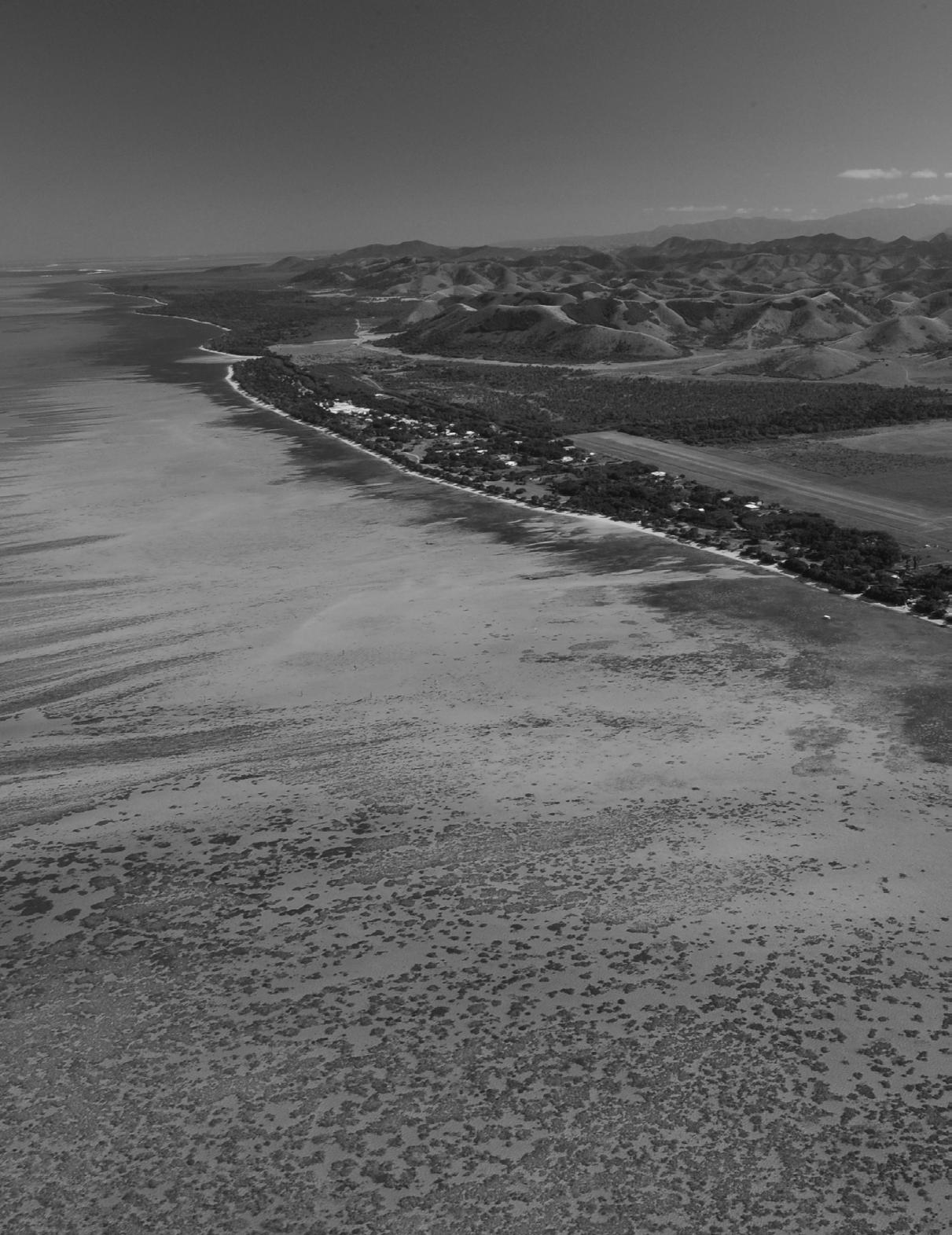
EXPLORING THE COWBOY CULTURE & AGRICULTURE OF NEW CALEDONIA
There is a hidden gem off the west coast of Australia that has a cowboy culture all its own.
BY KRYSTA PAFFRATH
Nestled in the heart of the Pacific Ocean, lies New Caledonia, a small island jewel of biodiversity and cultural richness. While often celebrated for its stunning landscapes and coral reefs, the island also boasts a rich agricultural heritage deeply intertwined with its cowboy and ranch culture.
10
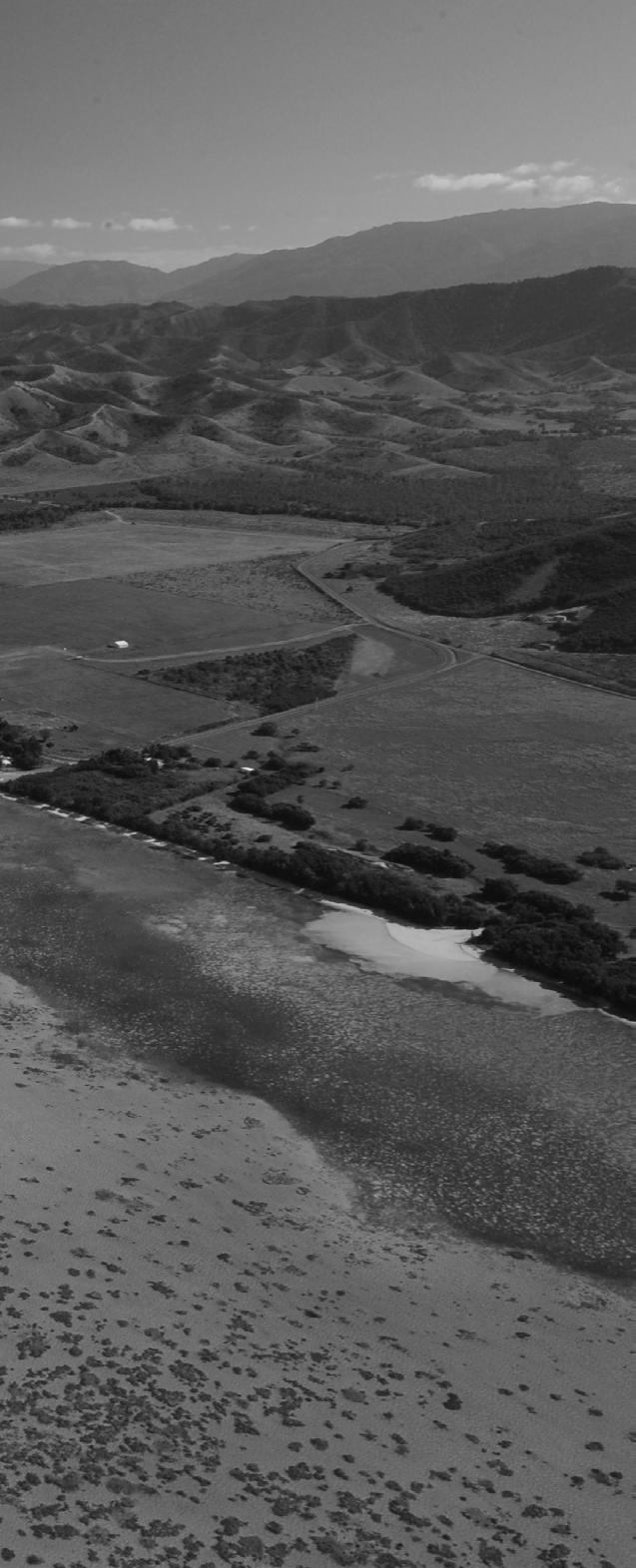
Agriculture in New Caledonia
If you were to venture across the vast plains to the West Coast of New Caledonia, then you would find yourself in the heart of agriculture where farmers and ranchers are the most prominent. Alongside enlightening farm excursions and samplings of freshly harvested goods, certain farm proprietors extend genuine hospitality with homestay experiences and table d’hôtes (host’s table). Embrace this chance to journey through the countryside and immerse yourself in colonial residences rich with historical significance.
Agriculture in New Caledonia is as diverse as its geography. From lush tropical forests to expansive plains, the island’s varied landscape provides fertile ground for a range of crops. One of the island’s most iconic agricultural products is vanilla. Renowned for its exquisite flavor and aroma, New Caledonian vanilla is prized by chefs and connoisseurs worldwide. Cultivated with care and expertise, this fragrant spice embodies the island’s commitment to quality and tradition.
Ranching in New Caledonia
Beyond the verdant fields and plantations, New Caledonia’s ranches offer a glimpse into its rugged frontier spirit. Cattle ranching has a long history on the island, dating back to the days of early European settlers. Today, modern ranches blend traditional methods with contemporary practices to raise beef cattle for both domestic consumption and export. While you won’t find traditional breeds such as Angus or Hereford, you will see more Brahman mixes than anything else.
The vast expanses of grazing land provide ample room for the cattle to roam, fostering healthy herds and ensuring the sustainability of the industry. Ranchers work tirelessly to care for their animals, forging a deep connection to the land and a profound respect for the environment.

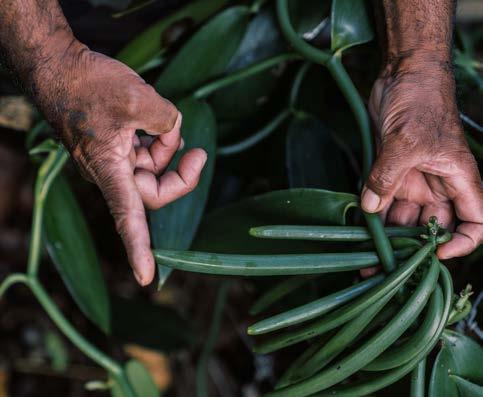
New Caledonian Fairs
No discussion of agriculture and ranching in New Caledonia would be complete without mentioning its vibrant cowboy culture. While they don’t have all of the traditional “rodeo” events that we have here in the States, they do have some events along with a few of their own. Some of the events you will find at the fair include the infamous bull riding and bronc riding. In addition, you will also find an event very similar to our steer wrestling. Outside of our realm of normal events, they have a bullwhip event where the rider is on horseback and must crack a whip to knock a water bottle off of a barrel. They also have a horse race that is a true testament to these cowboys’ horse-handling skills.
One of their most popular fairs is called the Foire de Koumac et du Nord. It is held over three days in its namesake town and stands as one of New Caledonia’s premier fairs. Esteemed by the nation’s breeders, producers, and farmers, this gathering draws more than 15,000 attendees.
From wrangling cattle to horse races, these skilled stockmen are the guardians of the land, preserving age-old traditions while embracing the challenges of the modern world. Their distinctive attire, complete with wide-brimmed hats and leather boots, is a testament to their proud heritage and enduring legacy.
As New Caledonia continues to evolve and grow, its agricultural and ranching communities remain steadfast in their commitment to preserving the island’s natural beauty and cultural heritage. Through sustainable practices and innovative techniques, they strive to balance tradition with progress, ensuring that future generations can enjoy the bounty of the land for years to come.
In a world where the pace of change seems ever-accelerating, the timeless rhythms of life on the farm and the open range offer a welcome reminder of the enduring bond between humanity and the land. In New Caledonia, agriculture, ranching, and cowboy culture are not just livelihoods; they are a way of life, rooted in a deep love and respect for the land and its people.
Looking to explore New Caledonia for yourself? Make sure to head to au.newcaledonia.travel to plan your whole trip from travel recommendations, events, accommodations, and more!
moderncowboymedia.com 11
Exploring the European Cowboy
It’s not very often we get to peek through the lens of cowboy culture in another country, but thanks to Bjorn Staps, we have that opportunity in this feature.
BY KRYSTA PAFFRATH
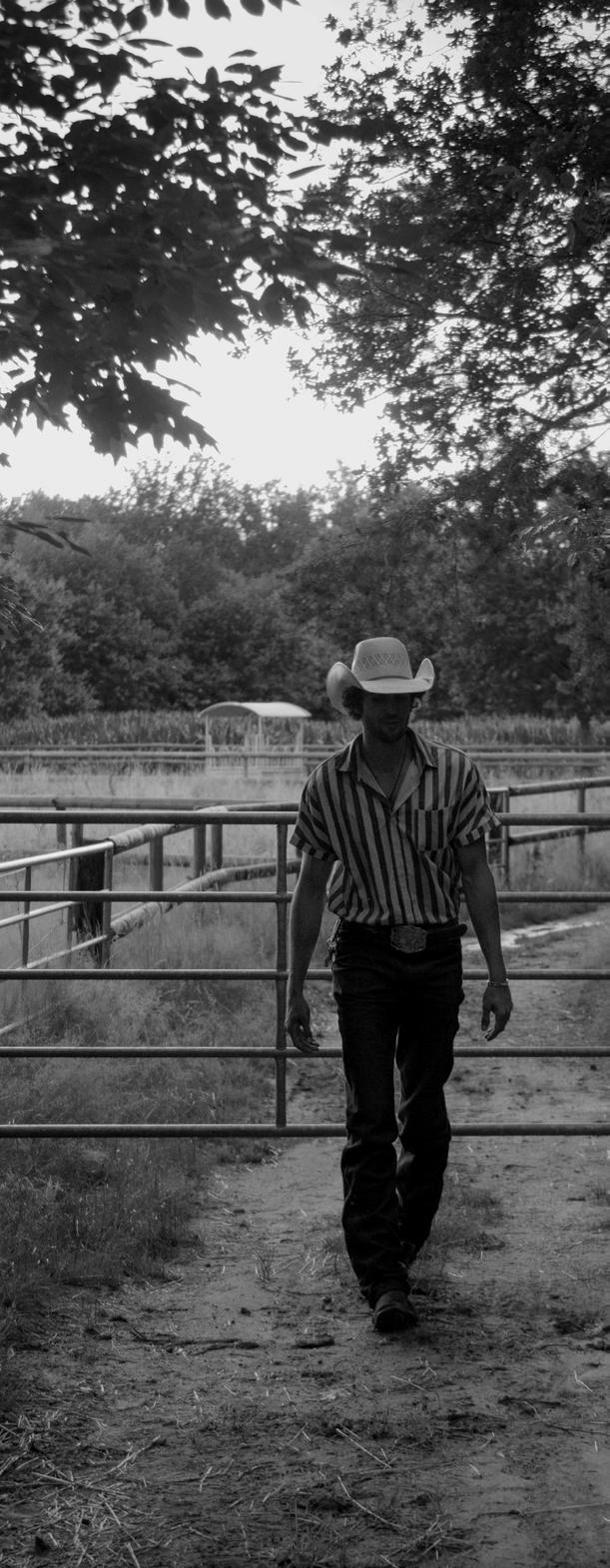
About the Project “European Cowboy”
‘European Cowboy’ is a book about identity, expression, and freedom. It depicts a close-knit community of young cowboys in Europe who practice “bull riding,” part of the classic (American) rodeo and also the most dangerous sport in the world. During the summer months, these men travel through Belgium, France, and Italy to pursue their dreams of freedom and heroism by participating in local rodeos. For most of them, then, bull riding is much more than a sport; it is part of a lifestyle in which they strive for a sincere life in which man and animal live together. In part, their lifestyle is also based on the ideal image of ‘the Cowboy’ as we collectively remember it from the mythical American West. In “European Cowboy,” visual elements of this mythical cowboy we know from television series, movies, and commercials are interwoven with the harsh realities of individual dreams, friendship, and vulnerabilities of the real cowboys of Europe in their quest for personal forms of identity and freedom.
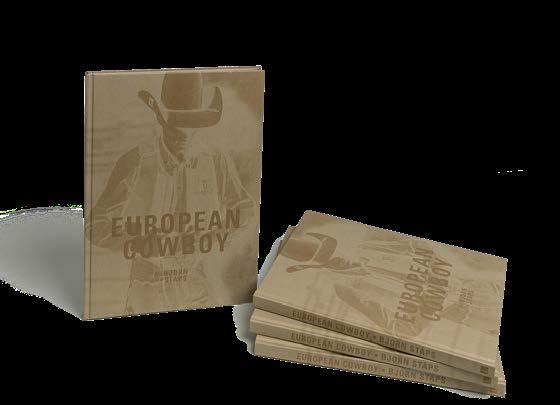
About Bjorn Staps
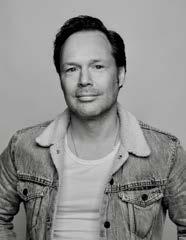
Bjorn is an experienced photographer born and raised in the Netherlands. He works on both personal projects and assignments. As a photographer, he is attracted to natural moments of people experiencing life. In his personal work, Bjorn focuses on people or communities who do not necessarily conform to society’s norms, but are in search of personal forms of identity, expression, and freedom. The protagonists in his work have the courage to shape their personal lives in their search for independence and heroism.
Learn more about Bjorn and buy your copy of the European Cowboy at EuropeanCowboy.com and follow Bjorn on Instagram @bjornstaps
12
Defining Quality for Generations
For over a century, Murray McMurray Hatchery has remained a trusted, family-owned business, working tirelessly to ensure our poultry meets the highest standards. Whether you are an experienced enthusiast, or just embarking on the journey, look to McMurray Hatchery for guaranteed quality rare and Heritage breeds, low minimums, and all the supplies you need to raise your flock. MCMURRAYHATCHERY.COM | 800.456.3280




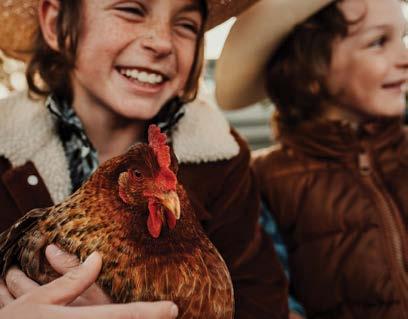
SCAN TO REQUEST A FREE CATALOG
Photography by Anna Christian, @call.it.christian
WHAT ORIGINALLY PIQUED YOUR INTEREST IN CAPTURING THE ESSENCE OF THE “EUROPEAN COWBOY”?
As a person, I have always been interested in the lonely hero. Not Spiderman or Batman, but the working class hero as appearing in Bruce Springsteen’s songs. The solitary protagonist in search of success and heroism is an interest that has become a common thread in my work. I also find the visual language surrounding the American West and the Cowboy in movies, TV series and commercials very interesting. The combination of real cowboys in countries where you would not immediately expect them, with rodeo as the most dangerous sport on earth was a perfect combination for me.
WERE THE PHOTOS IN THE BOOK
TAKEN ACROSS A SERIES OF EVENTS? IF NOT, HOW WERE THEY CURATED?
The photos of European Cowboy were taken over a period of four years in Belgium, France and Italy. In these 3 countries there are about 10 to 15 ranches where bullriding is being practiced and that’s where all the images were shot. I photographed during the annual rodeos, but also during weekend training sessions. In the book I wanted to depict not only the sport itself or the European cowboy lifestyle, but especially focus on the young cowboys’ quest for success and heroism combined with their close friendships. In the book, the designer created a rhythm with the images depicting a rodeo event with an emphasis on the mutual bond of the cowboys within it. Because the rodeo community in Europe is rather small and hidden, the action moments in the

book are hidden in fold-out pages. A hidden section in the book as it were. In the back of the book is a section where the cowboys featured in the book are portrayed with their biography, races won and lists of their injuries. And there are quite a few injuries with some of the guys! Sometimes you even wonder why they do it, because it’s so dangerous. These pages are printed with gold ink to emphasize success, or the desire for success.
WHAT STOOD OUT TO YOU ABOUT THE “COWBOY” IDEALS AND LIFESTYLE THAT URGED YOU TO CREATE AN ENTIRE BOOK AND PROJECT AROUND IT?
Before starting the project, I had no idea what kind of people I would meet on the ranches and during the rodeos. What struck me most was the incredibly strong bond of friendship that the cowboys have among themselves. During bull riding, they are constantly saving each other’s lives by distracting the bull when a rider falls of or to make sure riders (and also the bulls!) stay safe during rides, The bond between them becomes super strong in a short period of time and the love of for their animals is enormous. It is beautiful to see how within this super masculine environment these men are not ashamed to show their friendship for each other. Besides focussing on the bull riding, the ranches and the cowboys, the bond between the men has become one of the main topics of the book.
As a photographer, I was welcome everywhere and was offered help on all sides. Rarely have I felt so welcome during my photography work! It’s a great community where I still love to hang out!

14
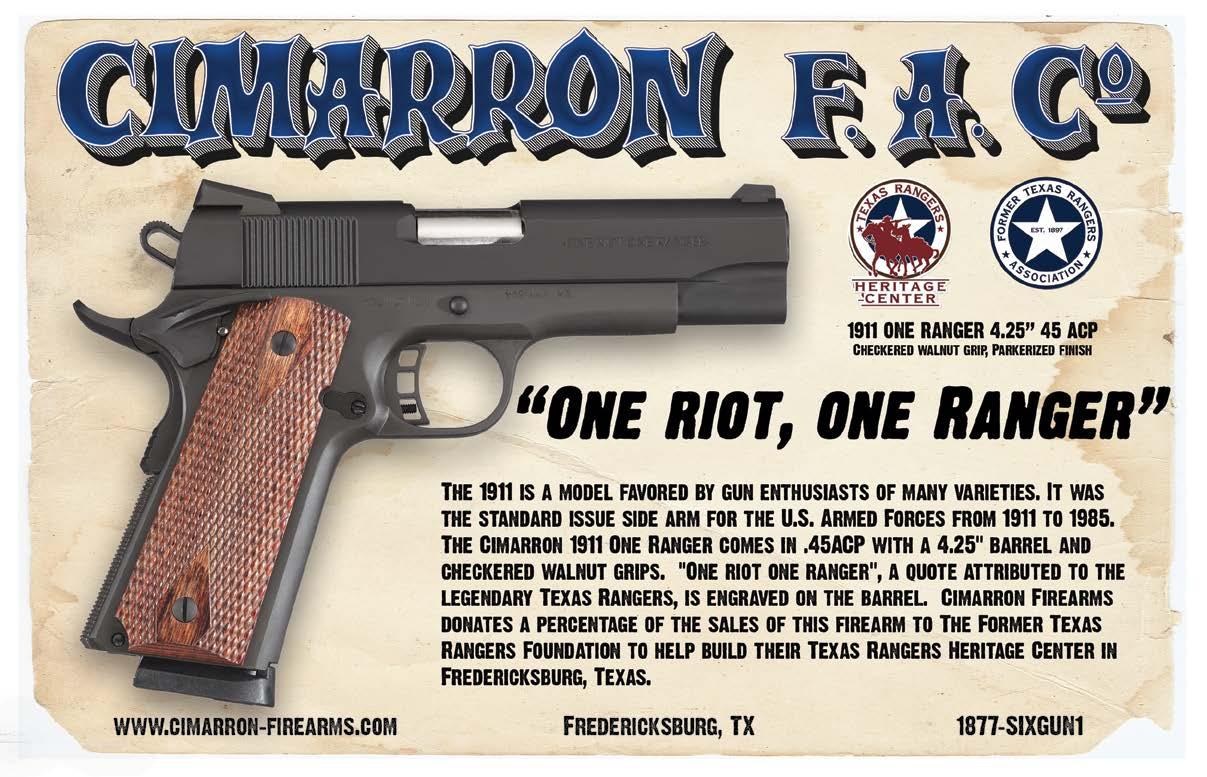
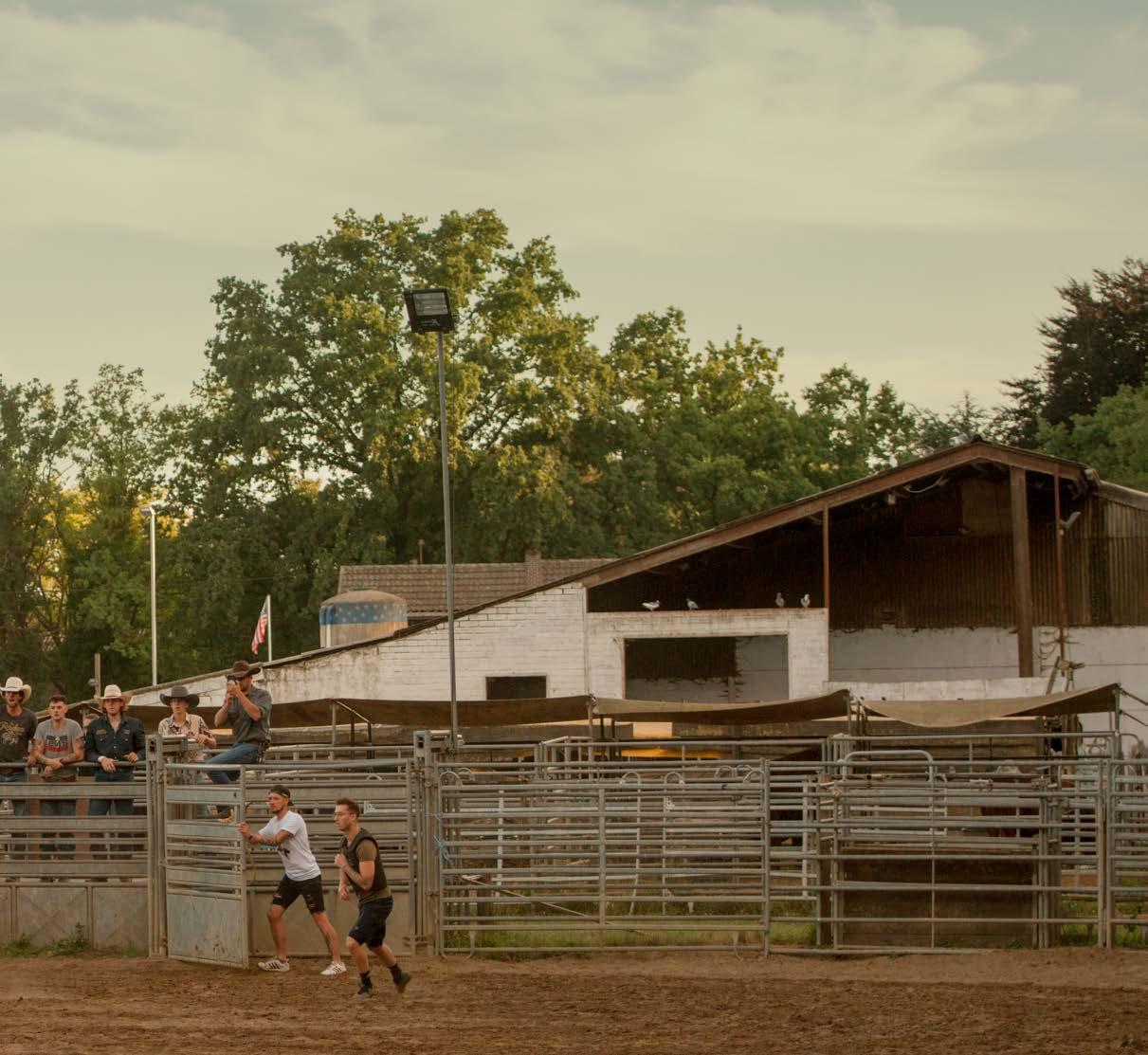
moderncowboymedia.com 15
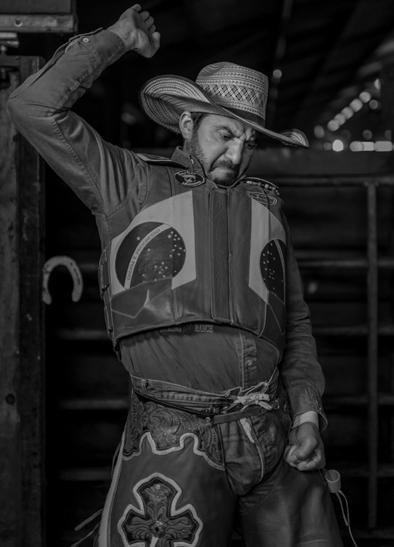
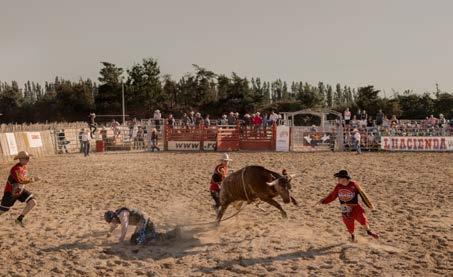





‘EUROPEAN COWBOY’ BY photographer Bjorn Staps is a book about identity, heroism and freedom. It depicts a close-knit community of young cowboys in Europe who practice “bull riding,” part of the classic (American) rodeo and also the most dangerous sport in the world. During the summer months, these men travel through Belgium, France and Italy to pursue their dreams of freedom and heroism by participating in local rodeos. For most of them, then, bull riding is much more than a sport; it is part of a lifestyle in which they strive for a sincere life in which man and animal live together. In part, their lifestyle is also based on the ideal image of ‘the Cowboy’ as we collectively remember it from the mythical American West. In “European Cowboy,” visual elements of this mythical cowboy we know from television series, movies and commercials are interwoven with the harsh realities of individual dreams, friendship and vulnerabilities of the real cowboys of Europe in their quest for personal forms of identity and freedom.
Photography and text: Bjorn Staps
Publisher: Lecturis
Design: -SYB-
Lithography: Sebastiaan Hanekroot, Colour & Books
Production: Jos Morree, Fine Books
Print and binding: Wilco Art Books
Hardcover: Golden ink, embossed title
152 pages (incl. 2 fold-out pages with a hidden section)
Paper: Munken Lynx Rough 120 gr. - Munken Lynx Rough 100 gr.Soporset 60 gr.
Dimensions: 240 mm x 320 mm
Language: English+French
Print run: 500 copies
Date: 2023
ISBN: 9789462264816
www.europeancowboy.com
www.bjornstaps.nl
16





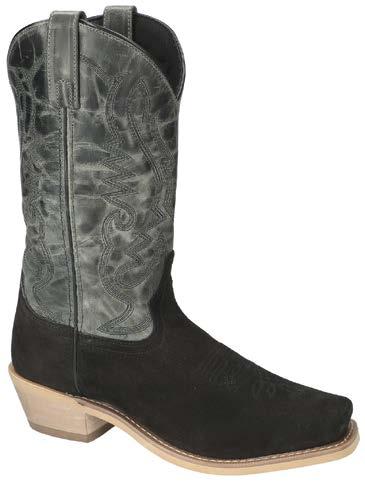

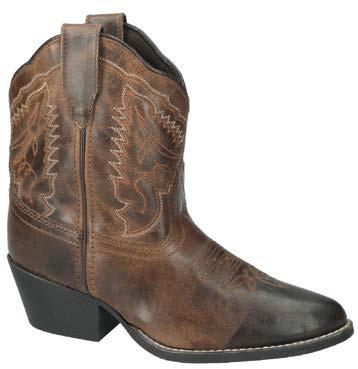

Family Owned and Operated For Over 30 Years www.smokyboots.com
NFR RODEO ATHLETE Q&A
From Alberta to Texas and Everywhere In Between
Q&A with Zeke Thurston
BY HANNAH CRANDALL
Nine Canadian Finals Rodeo (CFR) qualifica tions. Four consecutive CFR titles. Nine Wrangler National Finals Rodeo (NFR) qualifications. Three NFR average titles. Four PRCA world championships. More than $2 million in career earn ings. Zeke Thurston is a legendary saddle bronc rider with rodeo in his blood, and he’s had the opportunity to do what he loves with his family across both Canada and the United States. Modern Cowboy Magazine spent some time chatting all things life, family and rodeo with Thur ston, and here’s what he had to say!


YOUR DAD AND FAMILY WERE HEAVILY INVOLVED IN RODEO AND THE COWBOY WAY OF LIFE. WHAT WAS YOUR CHILDHOOD LIKE AND YOUR BEGINNINGS IN RODEO?
I always just gravitated to rodeo ever since I can remember. I had a pretty standard ranch kid childhood. We grew up on a cow-calf operation in Big Valley, Alberta, so horses and cattle were a part of everyday life. My dad had a successful career as a bronc rider; he went to the NFR six times, the Canadian finals, and won rodeos like Houston, Cheyenne, and Salinas. Every little kid kind of wants to be like their dad, I guess, and that’s all I wanted to do. But both sides of my family are really deeply rooted in rodeo. They coordinated the openings for the Canadian finals and even down in Las Vegas, and my mom did some announcing and ran flags at the Calgary Stampede.
When I was about nine, my two brothers and I started a contract act, where we had a little trick riding, trick roping, and a Roman riding western show act. One thing led to another, and it got big in a hurry. We got hired to all sorts of rodeos on both sides of the border, and we were the Contract Act of the Year in Canada twice. We did that until I was about 14, and then I rode steers at the pro rodeos in Canada, which progressed into the high school deal. I think I got on my first bronc when I was probably 14, which is probably a little young, but it was in a pretty controlled setting. My dad did a lot of rodeo schools, and I’d run around and bug them all to let me get on. Finally, they did, and then I was hooked. I started getting on a few broncs and quite a few bulls, and I actually thought I was going to be a bull rider for the longest time. I took some pretty good wrecks bull riding in high school, and I could see the writing on the wall with the longevity of a career is quite a bit better in bronc riding and now here I am.
FOUR WORLD CHAMPIONSHIPS STARTING IN 2016 - WALK US THROUGH THOSE TITLES AND THE YEARS THAT LED UP TO THEM.
I always figured I would win a world title; hopefully a few of them, but I didn’t know it’d come that soon. I had just turned 22 when I won my first one in my second full year. My
rookie year was 2015, and I made both the Canadian finals and the NFR, but I was bound and determined to go back every year. 2016 was kind of a weird year, that was the year the ERA was formed. So long story short, I was suspended for 60 days at the beginning of the year. But I decided I’d go rodeo and make up for lost time, so we got after it and went hard. I ended up having a really good year and gathered up quite a bit of money. I won Calgary that year, which didn’t count back then, but I had a good year. I went into the finals about fourth, and I just went through the week riding my broncs. I think Killer Bee had bucked me off in the second round, but other than that, I rode them all and had a good finals. After the ninth round, I was in second behind Jacobs (Crawley), but there were a lot of things that had to happen for me to win the world. I ended up winning third in the round I think, won the average, and had enough to win my first world title.
Then after the first one, I wanted another one pretty bad just to prove the first one wasn’t a fluke. In 2016, they weren’t expecting anyone but Jacobs to win it. Then, in 2019, I had a really good year and went in second behind Ryder (Wright). I think I won three rounds and led it from then on. After the ninth round, they couldn’t catch me.
Then in 2022, that one was pretty cool, because I came from about $116,000 back, went in somewhere around fourth or fifth, and had some ground to make up. I made
18
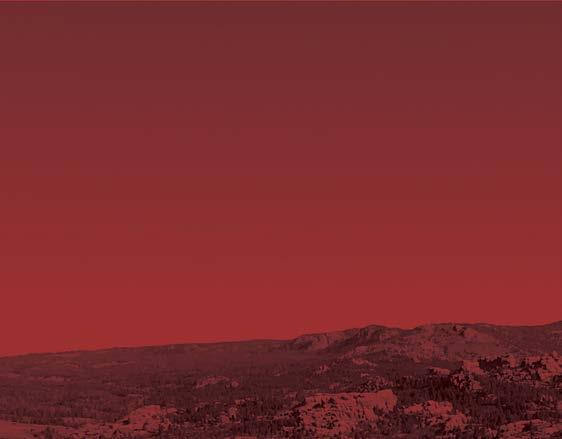







Our is this WestWild


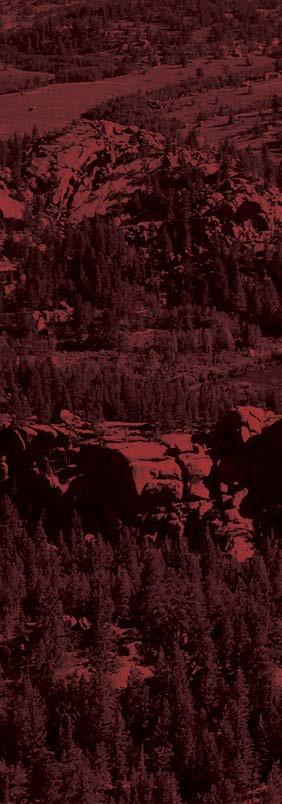
Calling all thrill-seekers to Cheyenne—let yourself crave this open-air chase of adventure. See cowboys bareback riding at the top of their game. Soar on a sunlit train ride across the Terry Bison Ranch. Head back with stories that make you feel alive. Cheyenne.org
W y o m i n g
h e r e • Chey
starts
some really good rides to win two or three rounds. It came down to the 10th round, and all I had to do was get a score. I had a horse of Sammy Andrews’ called All Or Nothing, and I ended up splitting the round, winning the average, tying the average record, and winning the Top Gun and the World all in one ride.
This past year, I went in third or fourth, but I went out there and won three rounds, put together some good rides and kind of knocked on the door the whole time. It was a good battle between myself, Sage (Newman), and Kade (Bruno) all week, and it came down to the last round again. I just had to get a score and stay on, and it wasn’t an ideal situation with that horse, but we made the best of it.
QUALIFYING FOR THE NFR EVERY YEAR
SINCE 2015, HOW HAVE THINGS CHANGED FOR YOU THROUGHOUT YOUR CAREER?
It’s changed a lot as far as bronc riding goes. The horses have really come on and changed a lot in the last 10 years. The group of bronc riders going now is a tough crowd, and it’s as competitive as it’s ever been. It is really a crowd-pleasing event to watch just because of the guys that are in it. It’s a grind to make it every year. It’s a lot of miles and a lot behind the scenes that most people don’t see, but it’s a pretty awesome way to make a living for sure.
WHAT ARE YOUR THOUGHTS ON CANADIAN RODEO AND COMPETING ON BOTH SIDES OF THE BORDER?
There is a minimum of 15 rodeos to be eligible for the Canadian finals, and they have about 45 events a year, so we’ll do quite a bit of rodeoing up there. The best bucking horses in the world come from Canada. All these guys in the States that have good horses, their horses have Canadian influence. So, we have great broncs up there and it goes hand in hand with the riders. When you have great broncs, you have great bronc riders. You might have to sacrifice some rodeos down south and vice versa to rodeo in both places, but it is really cool to

go to the Canadian finals. It’s usually two to three weeks before the NFR with lots of stock that will also be headed to Vegas. It is the next best rodeo finals you can go to.
At the 2022 NFR, Thurston won the Top Gun Award for the first time in his career by winning the most money in one event by any NFR contestant
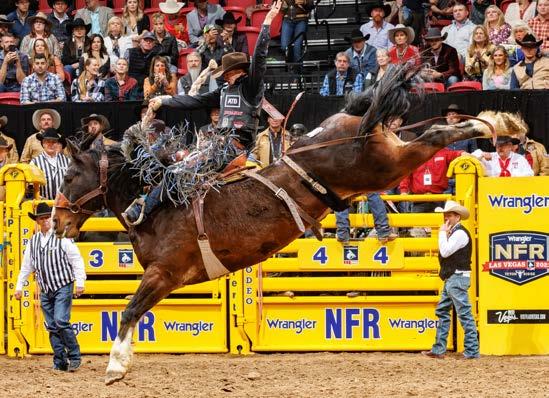
RODEOING FROM CANADA, WHAT DOES LIFE LOOK LIKE FOR YOU BALANCING RODEO, FAMILY, AND RANCHING?
I knew right away that this was probably what I was going to do for a living, and when we had our first child, I invested some of my winnings into a little property down here in Stockdale, Texas for when I have to be down here for the winter rodeos. Every winter after Christmas, we load the family up, bring some horses, and come to our little place down here to go to all the rodeos together. Then, in April, we will take everybody back to Alberta where some of the Canadian spring rodeos are starting to kick off. My wife and I run grass yearlings, so we usually start getting yearlings at about that time of year. I get to be home quite a bit in the spring going to Canadian rodeos; then once June hits, we get pretty busy until the end of the season.
When we’re in Texas, we bring some horses, and I recently started raising some horses. I’ve got some two and three-year-olds, so I ride colts, and my wife likes to breakaway rope, so she has a couple of her horses. We just spend our days making entertainment out of horses. Then, when we go home, it’s a pretty typical ranch lifestyle - building fence, checking fence, or processing yearlings.
WHAT ARE YOUR PLANS FOR THE REST OF YOUR CAREER?
As far as the rest of my career, I haven’t put too much thought into that. These are probably the best years that I have left, whether it’s four, five, six, or seven years, but I don’t think I’m going to hang around too long past my prime. Everything is changing with the kids getting older, and I’m sure as they start getting into their own things, we’ll want to be home more but at the same time, they love what I do, and they like to cheer Dad on and go to the rodeos. It’s really special to share that with them.
20


22

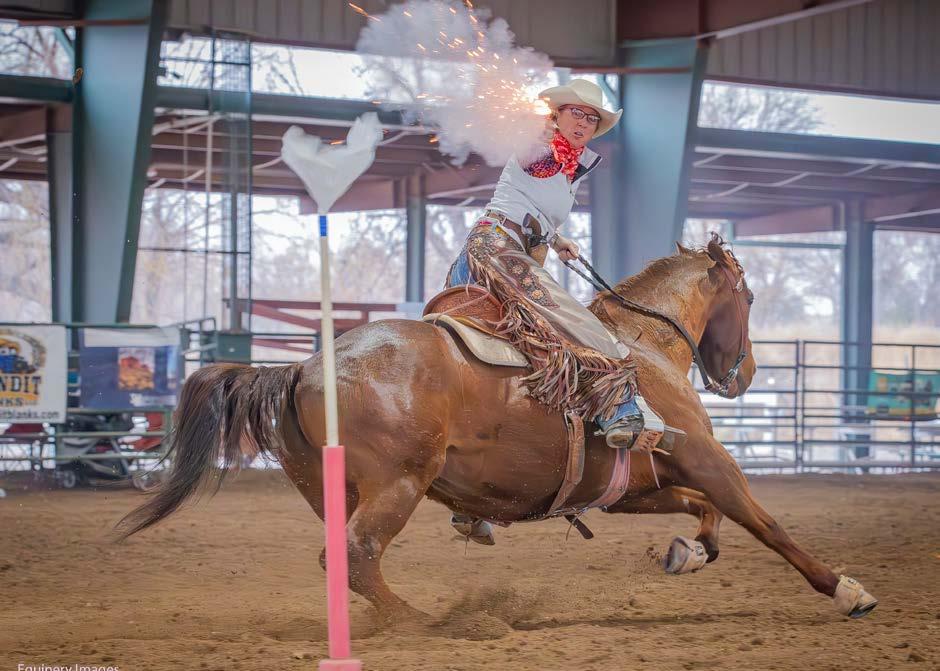
Mounted shooting, a thrilling combination of horsemanship and marksmanship, has been captivating audiences and participants alike for decades. At the forefront of this exhilarating sport is the Arizona Cowboy Mounted Shooting Association (ACMSA), dedicated to fostering a safe, family-friendly environment for competitors of all ages and skill levels. In this interview, we delve into the heart of mounted shooting with ACMSA, exploring its mission, the training required for both horse and rider, the firearms used, the competition format, and the future of the sport.
Q: CAN YOU DIVE A LITTLE BIT DEEPER INTO THE MISSION OF ACMSA?
A: Our mission is to grow the sport. ACMSA continuously works to implement new ideas to improve the sport and provide a safe, family-friendly, fun environment for everyone in attendance. We welcome new shooters and are always available to answer any questions they may have.
Arizona Cowboy Mounted Shooting Association (ACMSA) was founded in 1997 by members for members. ACMSA produces shooting matches where the competitor’s experience is a top priority. ACMSA is a not-for-profit club. All profits are used for the operation of the club, equipment, year-end awards, and generous payouts and awards throughout the year.
Q: WHAT IS SOMETHING PEOPLE MIGHT KNOW ABOUT MOUNTED SHOOTING?
A: People may have seen Mounted Shooting during a halftime show at a rodeo or demos at various events such as the Game and Fish EXPO or other events.
Q: WHAT KIND OF TRAINING IS REQUIRED FOR BOTH THE HORSE AND RIDER IN MOUNTED SHOOTING?
A: Mounted Shooting can humble the best of riders. Running a course looking straight ahead, with proper body language, seat, and hands can be challenging enough at high speeds. In mounted shooting, you can be turning left but reaching back to the right to shoot a target, sending body
Our club operates through the efforts of volunteers. The success of the club is a direct result of the contributions of these individuals.
language to your trusty steed that may not be conducive to making that left turn. You have one hand on the reins and a gun in the other hand. There is no grabbing the horn to turn a barrel.
Riders have to learn to ride differently than in other equine disciplines. A solid, broke equine partner is the best tool in the box. Breaking your horse to gunfire would be the most challenging for most, I would say. Second to that, learning your own body position during a run, gun change, and gun handling.
A good shooting horse will know how to carry itself correctly in turns, rate, neck rein, and be broke to gunfire. A ‘good’ mounted shooter (rider) will learn to trust their ‘partner’ and know their pony will do their job. This allows the shooter to focus on their form, the targets, and gun change.
moderncowboymedia.com 23
Q: IF SOMEONE WANTED TO GET STARTED IN MOUNTED SHOOTING, HOW WOULD YOU RECOMMEND THEY DO THAT?
A: Although a person can make their own horse, go out and shoot, after my own personal experience, I would encourage anyone who can, to seek out a trainer. They can help find a suitable shooting horse. They can attend lessons and typically try out a number of different brands of equipment. There is a big difference between holsters and guns. It is not a ‘one size fits all’. Although it may cost a few bucks to hire a trainer, at the end of the day it is more economical and less frustrating than learning by trial by fire. When factoring in entry fees, buying equipment and later replacing that equipment because it isn’t working out well, horse training (gun breaking) gone wrong, and trying to fix it later, it is money well spent.
Q: WHAT TYPE OF FIREARMS AND AMMUNITION ARE COMMONLY USED IN MOUNTED SHOOTING?
A: Replica Colt .045 single-action pistols are used in Mounted Shooting. The brands, barrel lengths, and grips vary, depending on the shooter’s personal preference. We use .045 caliber black powder blanks.
Single-action pistols require the shooter to pull the hammer, then the trigger, for each shot.
Rugers Montados are the most sought-after and in my opinion, best-mounted shooting guns. They were designed by mounted shooters and have many desirable features that the other brands do not have.
Cimarron, Uberti, and Taylor Running Irons are also common brands used in mounted shooting. There are several models available from each of these companies that are great options.
Most mounted shooters have ‘action jobs’ added to their guns by professional gunsmiths. Action jobs add smoother action, lighter hammer, and trigger pull. Some shooters like a bird’s head grip and others like traditional.
Mounted Shooting also has a rifle and shotgun class. Shotguns must be side-by-side coach-style. Rifles can be lever action, pump, or revolving.
Q: HOW DO MOUNTED SHOOTING COMPETITIONS TYPICALLY WORK?
A: Mounted Shooting matches can be one-day shoots, or a multiple-day shoot. Matches include a minimum of three ‘stages’ for a one-day match and can have up to 5 - 6 stages for a multi-day 2 or 3-day match.
Some matches have a 4D format, similar to barrel racing. Most matches have classes and

competitors compete with those in their class.
When Mounted Shooting began back in 1994, an average match would have 20 riders OR less. Over the past 10 years, numbers have grown. It is not uncommon to have over 100 riders at a local match...
There are 6 levels, 1 - 6, 6 being the highest/fastest riders. There are over 50 levels known as senior classes and the ‘open’ classes for those under 50 or anyone over 50 choosing to compete in the ‘open’ class.
Shooters move up based on wins. Depending on a shooter’s level, there are a minimum number of competitors in a class to count as a qualified win. Shooters need a set number of qualified wins for their class level in order to move up.
A stage is a pattern, similar to a gymkhana pattern. It is a course of fire, consisting of 10 balloon targets. Shooters will engage the course by crossing the timer line, shooting 5 balloons of one color, holstering their first gun and drawing their second gun, and shooting the second 5 targets.
Mounted Shooting is a timed event. Missed balloons,
24




failure to round the barrels or complete the course correctly (and other rule violations), and knocked down barrels = penalties. 5 seconds for knocked-over barrels or missed targets, 10 - 60 second penalties for other procedurals. The fastest combined times for all stages in a competition wins the class. In 4D matches, fast overall time wins the 1D, 2D-4D payouts are awarded based on where their times fall.
Matches that are based on ‘class’ offer a competitive chance to those who may not have the ‘fastest horse’. Being ‘clean’ (no misses or penalties), in an overall combined time format, offers the opportunity, to those who are consistent and have a competitive equine partner, to win their class vs a ‘horse race’. In mounted shooting, our motto is “Clean IS Green!” ($$)
Q: HOW DO YOU SEE THE FUTURE OF MOUNTED SHOOTING EVOLVING?
A: Our goal for mounted shooting is to be recognized and added to PRCA Rodeo competitions, and high school rodeos.
When Mounted Shooting began back in 1994, an average match would have 20 riders OR less. Over the past 10 years, numbers have grown. It is not uncommon to have over 100 riders at a local match and 200 - 350 riders at Regional, State, and National Championships.
Mounted Shooting is fun to watch, and many clubs are invited to ‘perform’ during halftime shows or during the event itself in other arenas. ACMSA has partnered with the Flagstaff Rodeo, Roots n Boots rodeo, and Parada Del Sol Rodeo, as halftime and other entertainment.
As a fan favorite, I see mounted shooting being included as an ‘event’ in pro-rodeo.
Closing Thoughts
MOUNTED SHOOTING IS a sport that the entire family can complete together. We have ‘wrangler’ classes for the little tykes, under 12, who do not shoot yet, senior classes, and many levels to suit all riders. Parents, kids, and grandparents can all enjoy this sport, in a class that suits their ability.
I would encourage anyone interested in Mounted Shooting to come out to a match. The Mounted Shooting community has one of the most friendly and open bunch of competitors. Everyone is happy to share tips, lend equipment, and connect you with a trainer you name it. A list of ACMSA events can be found at acmsa.com. You can also find a list of nationwide events at cmsaevents.com. Click on the events tab and select the state from the dropdown.
It’s clear that mounted shooting is more than just a sport—it’s a community, a passion, and a way of life. Thanks to the dedication of organizations like ACMSA, mounted shooting continues to thrive, attracting new riders and spectators alike. Whether you’re a seasoned competitor or a curious spectator, there’s no better time to saddle up and experience the thrill of mounted shooting for yourself.
moderncowboymedia.com 25
WITH KRYSTA PAFFRATH
HOW TO MAKE
COWBOY FRITO PIE & PORK CHILI
COWBOY FRITO PIE & PORK CHILI
Ingredients
• Frito chips of your choice + the bag
• 1 cup of your chili of choice (see my recipe for Green Chile Pork Chili below)
• Choice of Toppings
• Sour Cream
• Shredded Cheese
• Cilantro
• Lime
• Hot Sauce
• Avocado
• Additional Topping Ideas
• Queso
• Lettuce
• Onion
• Tomato
• Pico de gallo
• Green Onions
• Black Olives
• Jalapenos
GREEN CHILE PORK CHILI
• 2 lbs. Pork boneless pork loin, trimmed and cubed (1-inch cubes)
• 3 poblano peppers
• 4-5 jalapenos
• 1 head of garlic
• 6 tomatillos, husks removed
• 1 large white onion, peeled and quartered
• 1 bunch cilantro, the bulk of stems removed
• 3/4 tsp. salt
• 1/4 tsp. pepper
• 1/2 tsp. cumin
• 1/2 tsp. oregano
• 1 cup chicken broth
• 3 limes
Directions
Frito Pie
1.) First, heat up your chili.
2.) Prepare the toppings. (I love to make a topping bar!)
3.) Make sure you have at least one bag of singleserve bagged Fritos for every person.
4.) Open the bag of Fritos and fold down the top until you have a good opening to add your chili and toppings.
5.) Spoon the chili inside and then top with your favorite toppings. (See my recipe for Green Chile Pork Chili below.)
6.) Stir with a spoon and eat straight from a bag!
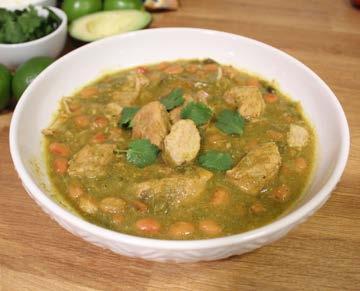

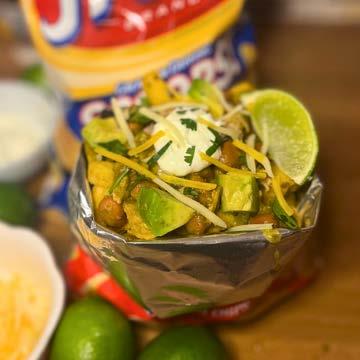
Green Chile Pork Chili
1.) Preheat the oven to 450 degrees. Place the peppers, tomatillos, garlic, and onion onto a baking sheet. Place the baking sheet in the oven 2 racks down from the broiler. Let the veggies roast for 2025 minutes or until the veggies are charred, keep an eye on them so they don’t overcook. Let cool down a bit before moving on to step 2.
2.) Place the veggies into a blender and place the cilantro on top. Place the lid on the blender. Pulse until a fine salsa forms, you can make this any texture you desire. If your salsa is too thick to blend up properly, add a splash of the chicken broth from the recipe.
3.) Cube your pork and toss and add the meat to the slow cooker. Pour over the salsa, and add the salt, pepper, cumin, and oregano. Pour over the chicken broth and stir.
4.) Cover and cook on LOW for 9 hours without opening the lid during the cooking time.
5.) Use for Cowboy Frito Pie, tacos, or in a bowl with cheese and a dollop of sour cream!
26
Rodeos , Dude Ranches, Endless Skies, And Music too...

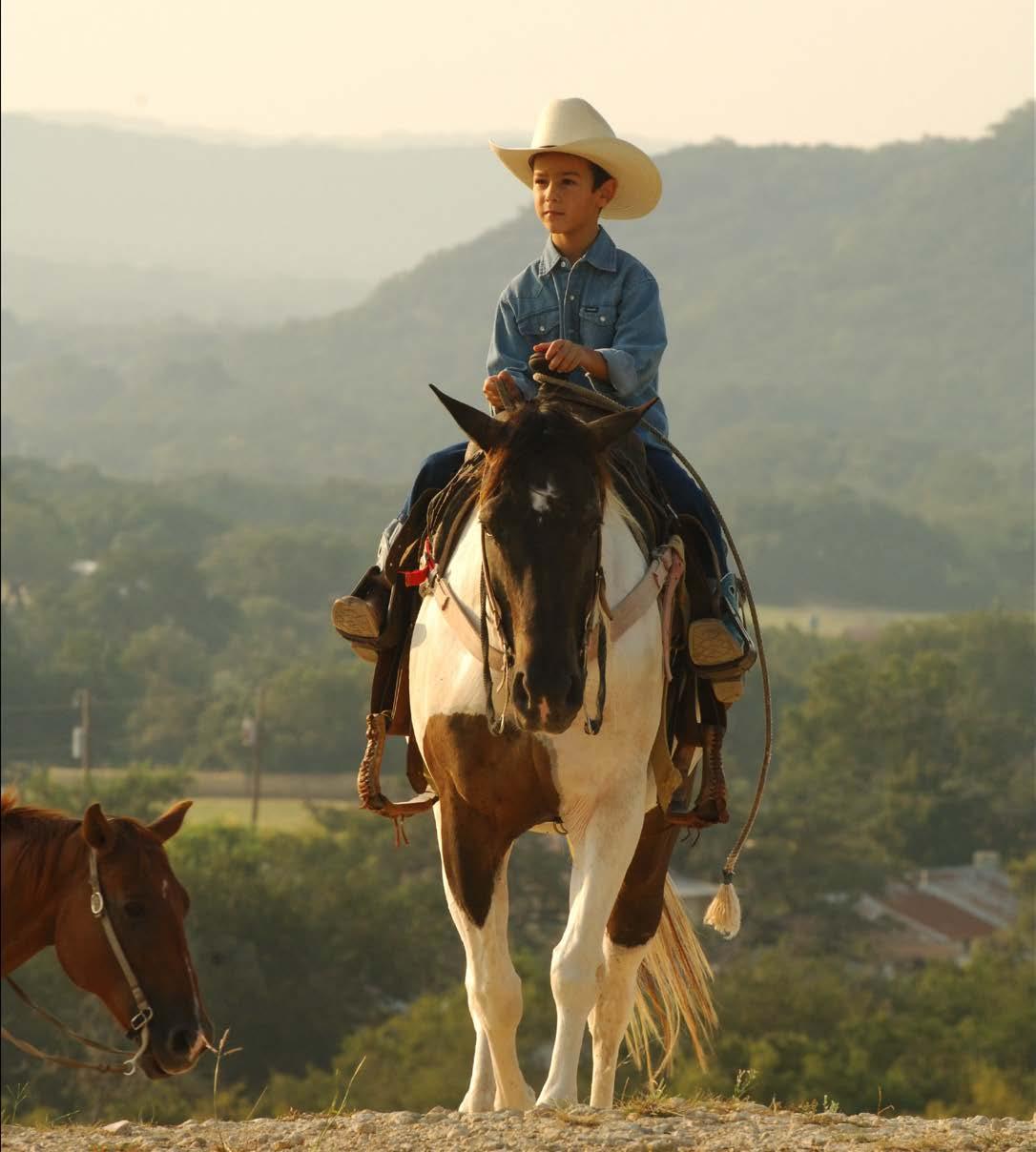
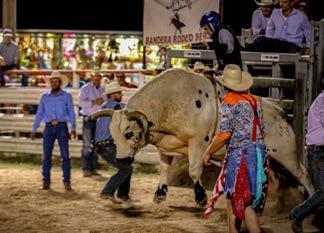



Live the Lore!
Photography credits: Tessa Kolodny- Moodswings Photography and 1881 Western Photography


THE GATEWAY TO MODERN HOMESTEADING: The Humble Chicken
As the question of where our food comes from becomes more and more prominent, modern homesteading is becoming trendy among those wanting to get back to their roots and provide for their family like our ancestors once did. But how are people getting their feet wet with it?
BY KRYSTA PAFFRATH
In the hustle of modern life, there exists a whisper of nostalgia—a longing for a simpler, more connected way of living. This whisper finds resonance in the resurgence of modern homesteading, a movement that transcends boundaries of geography and circumstance, offering a pathway to self-sufficiency and sustainability for all who seek it. From the sprawling fields of rural landscapes to the cramped confines of urban apartments, the principles of homesteading beckon, encouraging individuals to reclaim their autonomy and forge a deeper connection with the land. At the heart of this movement lies a humble yet profound truth: that the journey towards self-reliance begins with a single step, and often, that step is taken with the gentle clucking of chickens.
In an era defined by the convenience of grocery store aisles and fast-food drive-thrus, the notion of growing one’s food and tending to livestock may seem reserved for a bygone era of a simpler life. However, modern homesteading is far from a relic of the past; it is a dynamic and evolving practice that has adapted to the realities of contemporary society. No longer confined to the rural countryside, homesteading has found a new frontier in the urban landscape, where resourceful individuals are transforming city rooftops, balconies, and backyard plots into thriving oases of self-sufficiency.
The allure of modern homesteading lies in its accessibility—a quality that transcends the traditional barriers of location and expertise. Whether one resides in a rural farmhouse or a city apartment, the principles of homesteading can be applied with equal efficacy, albeit with some creative adaptation. In urban settings, where space is at a premium, innovative solutions abound, from vertical
28

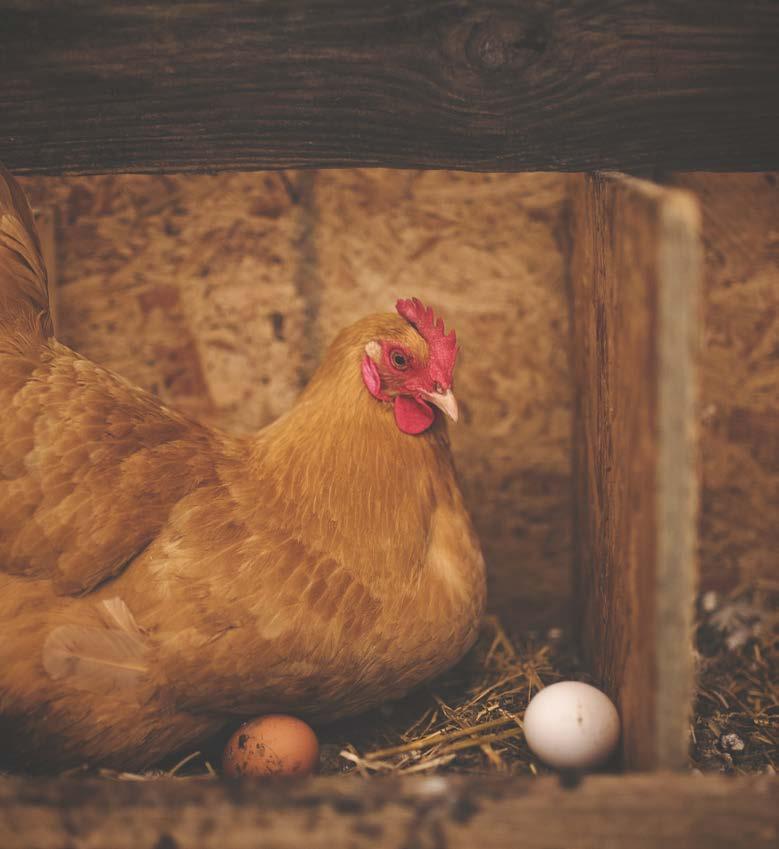
gardens to hydroponic systems, allowing even the most space-constrained individuals to cultivate their own food and reduce their reliance on the modern-day food system.
Central to the practice of modern homesteading is the humble chicken— a creature whose presence evokes images of quaint farmsteads and bucolic pastures. However, the reality is that chickens are equally well-suited to urban environments, where their compact size and low maintenance requirements make them an ideal starting point for aspiring homesteaders. With a modest investment in a coop and some basic supplies, city dwellers can enjoy a steady supply of fresh eggs, all while fostering a deeper connection to the food they consume.
The benefits of raising chickens extend far beyond the practicalities of egg production. Chickens are natural foragers, adept at turning kitchen scraps and garden waste into nutrient-rich compost—a valuable resource for urban gardeners seeking to enrich their soil and maximize their yields. Additionally, chickens provide effective pest control, gobbling up insects and grubs that might otherwise wreak havoc on vegetable patches and flower beds, making them useful for more than one purpose.
connection to the natural world—a quality that is sorely lacking in an era dominated by screens and smartphones. Through daily interactions with their feathered companions, homesteaders develop a deeper appreciation for the rhythms of nature and the importance of living in harmony with the land. Indeed, the simple act of collecting eggs or tending to a flock of chickens can be a profound reminder of our shared dependence on the earth and its resources—a lesson that resonates far beyond the confines of the henhouse.
Modern homesteading is not merely a lifestyle choice; it is a philosophy—a way of living that celebrates selfreliance, sustainability, and connection to the land.
Moreover, the act of raising chickens fosters a sense of stewardship and
In conclusion, modern homesteading is not merely a lifestyle choice; it is a philosophy—a way of living that celebrates self-reliance, sustainability, and connection to the land. Whether one resides in the heart of the city or the depths of the countryside, the principles of homesteading offer a pathway to a more meaningful and fulfilling existence. At the heart of this movement lies the humble chicken—a creature whose presence embodies the spirit of self-sufficiency and resilience. So let us answer the call of the homestead, and embark on a journey towards a brighter, more sustainable future—for ourselves, for our communities, and for the planet we call home.
moderncowboymedia.com 29
Introducing the Rural Podcast Network
Amplifying Voices from Rural America and Beyond
As podcasts continue to grow in popularity across the globe, the first network for rural, western, and agriculture podcasters is here.
BY KRYSTA PAFFRATH
In an era where podcasts have become the go-to medium for storytelling, education, and entertainment, there’s a new frontier emerging: the Rural Podcast Network. Aimed at amplifying the voices of rural, western, and agriculture podcasters, this network is poised to revolutionize how stories from rural America are shared and celebrated.
A Platform for Rural Voices
The Rural Podcast Network isn’t just another platform; it’s a movement. Founded on the belief that every story matters, especially those who are farmers, ranchers, or service members those who do, the network provides a platform for podcasters to showcase their unique perspectives, experiences, and expertise.
At the heart of the organization are its clients who have shows that cover a spectrum of topics ranging from leadership in the dairy industry to rural entrepreneurship and personal growth to rural women’s empowerment.
Empowering Rural Podcasters
What sets the Rural Podcast Network apart is its commitment to supporting its podcasters every step of the way. Whether they’re seasoned veterans or newcomers to the scene, the network offers a comprehensive suite of services designed to help them grow and expand their reach.
From advertising and marketing support to podcast management and access to tools and resources, the Rural Podcast Network equips its podcasters with everything they need to succeed in the ever-evolving world of podcasting. By providing guidance on content creation, audience engagement strategies, and monetization opportunities, the network ensures that its podcasters can focus on what they do best: telling compelling stories that resonate with audiences far and wide.
Building a Community
Even beyond the network of podcasts, the Rural Podcast Network is building a community—a place where podcasters and listeners alike can come together to celebrate rural life and culture. Through virtual masterminds, revenue-sharing programs, and an online membership the network fosters connections and collaborations that enrich the rural podcasting experience for everyone involved.
Whether you’re a farmer in the Midwest, a rural entrepreneur, or simply someone who appreciates the grit and resilience of the Western Lifestyle, the Rural Podcast Network welcomes you with open arms. Join us as we elevate the voices of Rural America and shine a spotlight on the stories that make Western lifestyle, rural living, and agriculture truly extraordinary.
For more information or to find our shows, visit RuralPodcastNetwork.com
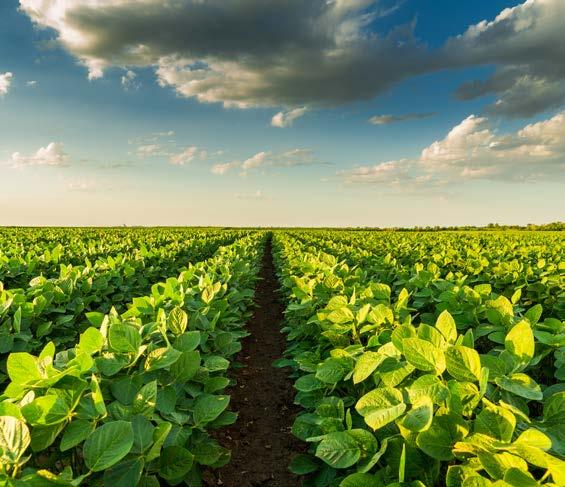

30
Rural Podcast Network Shows
The Thriving Equine Professional
This podcast will help you build your career confidence, grow professional connections, and inspire you to continue pursuing your role as a thriving equine industry leader!
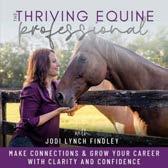
Jodi, host of the Thriving Equine Professional, is an equine industry speaker and coach. My hard-earned success has come through the challenges, struggles, and a few failures of learning and connecting in the animal health industry while excelling in roles I wasn’t always qualified for. I’m bringing together the connections, resources, and support you need to succeed and thrive in the equine industry.
If you are ready to build your career in the equine industry and thrive in a job that you are passionate about, you’ve found the right show. Listen and learn more at JodiSpeaksLife.com
Trailblazher Podcast

Ag Talk: Your Story Matters
“Ag Talk, Your Story Matters” is America’s Platform for Women in Agriculture to share their thoughts, ideas, and stories! It is a space for everyone in agriculture, no matter what their role is, to come together and have real and raw conversations with each other! This show features Ag Women Connect members, guest speakers, and current topics across the nation that affect our agriculture industry.
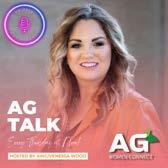
Ag Talk is hosted by Ag Women Connect, a professional networking organization geared towards women in agriculture. With chapters across the United States, this organization is truly leaving its mark in agriculture. To learn more about their show and mission, visit AgWomenConnect.com
WITH A DEEP PASSION FOR EXPLORING THE STORIES BEHIND RURAL WOMEN, HOSTS, JAN AND Erin peel back the layers into what makes rural women persevere on their paths to becoming Trailblazhers. We’re talking grit, resilience, creativity, resourcefulness & gutsiness! Jan and Erin will deep dive into what shapes their identities, uncovering the unique paths, life-changing decisions & turning points that have made them the women they are today – able to bring their businesses, dreams, and passions to fruition. With no holds barred, they will also be sharing their own Trailblazher journeyunpacking the tools, mindset, skills, & values that propelled them forward, especially in the face of adversity. Growth mindset, intuition, balancing a business and personal relationship as mother/daughter, and how to truly KNOW yourself to leverage that knowing in your life & business, are all topics they will discuss. So, whether you’re rural, rural-hearted or intrigued by the rural way of life, get ready to challenge yourself, while learning from our experiences and other rural entrepreneurs, as we explore the endless opportunities that lie ahead. Together, we can create something extraordinary.
LEARN MORE ABOUT THE TRAILBLAZHER CO. AT TRAILBLAZHERCO.COM
Uplevel Dairy Podcast
Barnyard Language
The Dairy Hour Podcast

The Uplevel Dairy Podcast is the podcast for dairy owners and managers reaching for their next level of success in business, management, and leadership. Join Uplevel Dairy Podcast host, Peggy Coffeen each week as she sits down with the industry’s leading dairy producers and thought leaders for conversations that will take you, your team, and your dairy business to the next level.
Listen and learn more at UplevelDairy.com

Barnyard Language is a parenting and agriculture podcast for farmers, ranchers, and homesteaders. Join hosts and guests as they have honest conversations about running farms and raising families. Co-hosts Arlene, a dairy farmer and mom of four from Ontario, and Caite, a beef and sheep farmer and mom of two from Iowa. You can expect a few good chuckles while learning more about agriculture and hearing about parenting in a brand new light.
Find them on Instagram, @BarnyardLanguage or anywhere you get your podcasts.
Welcome to the Dairy Hour

Podcast, where rural charm meets personal growth! Join host, Dairy Gal Val as she milks every moment for wisdom, self-improvement, and mental wellness. Val Lavigne is a dairy farming mom with a passion for filling hearts while never forgetting to fill her own cup. Get ready for insightful conversations, empowering tips, and a splash of fun and laughs! Every episode is a breath of fresh air and the inspiration you need to be your best self!
You can find the Dairy Hour Podcast anywhere you listen to podcasts!
moderncowboymedia.com 31
6 PRINCIPLES FOR THE MODERN DAY COWBOY
While some things never change, we believe that the modern-day cowboy is the pinnacle of time-tested tradition and new-age innovation.
BY KRYSTA PAFFRATH
In an age of rapid technological advancement and societal change, the image of the cowboy still resonates deeply in the American consciousness. While the days of riding the open range may seem like a bygone era, the essence of the cowboy spirit remains as relevant as ever. In today’s complex world, the principles that have guided cowboys for generations serve as a timeless blueprint for navigating life’s challenges with integrity, resilience, and a sense of purpose. In a time when “cowboy” is cool again, here at Modern Cowboy Magazine, we feel honored to be a part of this movement. Here are the 6 leading principles that encompass what a modern cowboy is.
1. Honor Tradition but Embrace Innovation
The modern cowboy understands the importance of honoring tradition while embracing innovation. Just as the pioneers of the past adapted to new tools and techniques to thrive in their environment, today’s cowboy embraces technology and modern practices while staying true to the timeless values of hard work, self-reliance, and respect for the land.
2. Take Pride in Your Work, Regardless of Who it’s For
Modern cowboys embody a steadfast commitment to taking pride in their work, regardless of who it’s for. Whether they’re tending to a small family ranch or working for a large-scale agricultural operation, the modern cowboy approaches each task with dedication, attention to detail, and a sense of pride in a job well done. They understand that their work contributes to the well-being of their community, the sustainability of the land, and the integrity of their profession. Whether it’s caring for livestock, maintaining equipment, or stewarding the land, modern cowboys take ownership of their responsibilities with unwavering pride and a deep respect for the legacy of those who came before them.
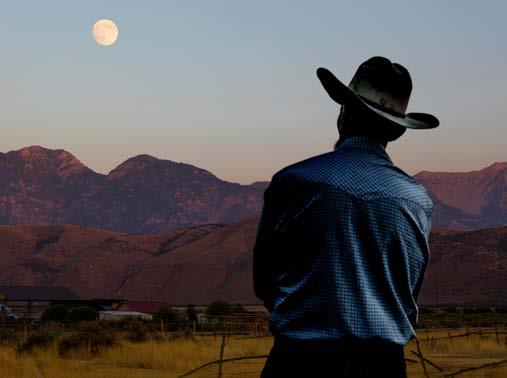

3. Foster Connection & Community
In this age when “cowboy” is cool again, we think it’s important to welcome new folks who are interested in this way of life and the best way to do that is through community. While the cowboy may be known for his rugged individualism, community has always been at the heart of frontier life. Whether lending a helping hand to a neighbor in need or participating in local initiatives, the modern cowboy understands the value of community and the power of collective action.
4. Embrace Change with Courage and Adaptability
The only constant in life is change, and the modern cowboy approaches it with courage and adaptability. Just as the cowboy of old ventured into uncharted territory with an open mind and a fearless spirit, today’s cowboy embraces change as an opportunity for growth, innovation, and self-discovery.
5. Modesty & Humility Will Never go Out of Style
Despite any accolades or recognition they may receive, modern cowboys maintain a humble demeanor, grounded in the understanding that true strength lies not in boasting but in quiet confidence and respect for others. They embody the spirit of humility by acknowledging their limitations, learning from their mistakes, and valuing the contributions of those around them. Whether they’re working the land, caring for livestock, or facing the challenges of everyday life, modern cowboys lead with humility, knowing that it is through humility that they gain the respect and admiration of their peers and communities.
6. Take Your Job as a Role Model Seriously
This may be the most important principle on the list. As we have an opportunity to show the world how cool Western lifestyle really is, it is also our responsibility to nurture the next generation and be role models for those who want to follow in our footsteps. The future has the opportunity to look so bright but we each have our place in making that way.
32
5 Things Bucking Horses Wish You Knew
These rock stars of rodeo have one of the best jobs in the arena, and yet their jobs are one of the most misunderstood. Here’s what they want you to know.
BY KRYSTA PAFFRATH
In the world of rodeo, few animals evoke as much curiosity, admiration, and even trepidation as bucking horses. Often misunderstood and unfairly characterized as untamed or unruly, there is much more to these rodeo athletes than meets the eye. Beyond their often jaw-dropping displays of athleticism lies a trove of qualities that, if understood, could foster a deeper appreciation for the role these animals play in rodeo.
From their unwavering resilience to their keen intelligence and unparalleled spirit, these equine athletes have much to teach us about strength, perseverance, and the beauty of embracing one’s true nature.
It’s far past time to shine a light on the often-overlooked virtues of bucking horses. I invite you to see these incredible animals through a new lens of understanding and appreciation.
Bucking Horses are Loved and Cherished
One of the most pervasive myths surrounding bucking horses is the notion that they endure harsh treatment. However, the truth couldn’t be further from this misconception. Riders and stock contractors who work with bucking horses respect and admire them for the athletes they are. In fact, both riders and stock contractors would be out of jobs if these horses weren’t properly taken care of. Another important point to make is that you can’t make a 1500-pound animal do anything they don’t want to do. These animals were bred and raised to buck and some grow to love their jobs and if they choose that isn’t the path then they are sold as saddle horse prospects.
Nothing Touches Their Junk
This may be one of the more ridiculous myths surrounding both bucking horses and bulls. Contrary to concerns about their physical health, nothing touches “their junk.” Their working gear, including the soft, fleece-lined leather flank strap, is used more as a belt that goes around their waste. If you look closely at any photo of a bucking horse or bull, it is very clear that none of their family jewels are in jeopardy.
They Truly Have the Best Job
Despite their awe-inspiring performances, bucking horses lead remarkably balanced lives. With the hardest-working among them performing for
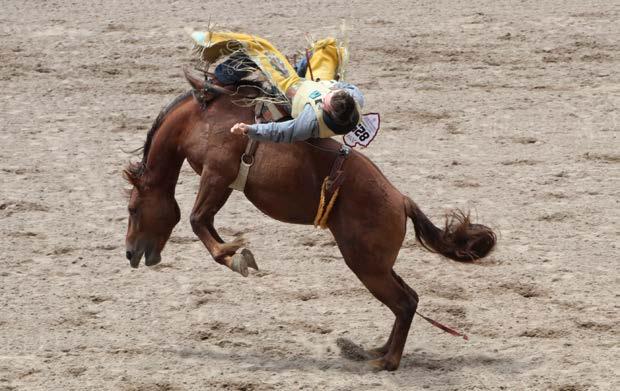
just three minutes a year, they epitomize the idea of work-life balance. Their ability to excel in their craft stems from their innate talents, as bucking is a natural instinct honed over generations of selective breeding. Born into families of skilled bucking horses, they inherit the legacy of their predecessors, ensuring that their lineage remains unmatched in the world of equine athleticism. In addition to my earlier statement about horses deciding against a bucking career, there are some cases where bucking horses are saddle horse rejects. There are many cases of burned-out dressage and show horses who have had enough of their careers and get a second chance at life through being a bucking horse.
They Have a Better Retirement Plan Than Most Humans
Retirement for bucking horses is nothing short of idyllic. Born and raised in the pastures of the buckers that came before them, these horses enjoy a life of leisure once their careers come to an end. With the care that broncs receive throughout their lifetime, it’s common for them to get into their late 20s, which for horses is about average. They usually retire to the pastures they were born in enjoying the fruits of their labor in serene tranquility.
We Come in All Shapes and Sizes
Contrary to what people think, bucking horses come in a variety of shapes, sizes, and genders. While the general belief is that all broncs are stallions, that couldn’t be further from the truth. In fact, it’s actually easier to have mares as broncs and they do their job just as well. Additionally, while “bucking horse” isn’t a breed, you can think of broncs as the melting pot of horse breeds. They can be a little of everything, but they can also be purebred horses that were a reject in a previous life.
In essence, the lives of bucking horses are a testament to the deep roots of rodeo in America. They stand for freedom, strength, and can be a tie that brings people together. Far from being mere performers, they are beloved members of their communities, embodying the resilience, grace, and spirit that define their extraordinary existence.
moderncowboymedia.com 33
Father’s Day Gift Guide

Forney 190 MP Welder
ITEM# 323
The Forney 190 MP is a powerful 4-in-1 multi-process welder capable of MIG, FluxCore, Stick and DC TIG welding. This single-phase inverter machine is easy to use and features a metal drive system to consistently feed a multitude of wires. Great for DIY,

ITEM# 85620
The Forney Spool PRO hornet is a one-of-akind spool gun that incorporates a 360-degree gooseneck allowing users to adjust the angle of the torch neck for out-of-position welding. This device also features a spool life indicator (arrow on the spool gun) to prevent wire depletion interruptions.
BY LUCY CLAYTON
Forney Flex 30™ Plasma ST
ITEM# 320
The Forney Flex 30 Plasma ST is the perfect all-in-one machine, from cutting to welding! This machine is dual-voltage (120V/240V) and can cleanly cut and weld thin sheet metal to 3/8” plate (sever cut up to 5/8”). Perfect for DIY, farm & ranch, maintenance, repair, and light industrial work.
Forney 180 ST + Welder
ITEM# 321


The Forney 180 ST + is a lightweight Stick and DC TIG welder that features pulse welding to weld on thin materials and out of position. This powerful 180A machine welds up to 3/8” and features a built-in hot start for effortless strikes.

Forney 45 P PRO Plasma Cutter
ITEM# 445
Experience enhanced cutting efficiency with the Forney 45 P PRO. Clean cut 7/8” and sever cut 1-1/8”. The Forney® Ignite™ hand torch offers extended consumable life, minimizing downtime. This plasma cutter is dual-voltage (120V/240V) and features a 40’ operating envelope to maximize cutting productivity.

Forney Series AutoDarkening Welding Helmet
ITEM# 55864, 55865, 55860
Forney auto-darkening welding helmets feature HD optical clarity with true color technology that allows you to clearly see what you’re doing, resulting in clear and precise welds. These helmets are easy to use and come in a variety of styles such as the limited-edition Forney 90th anniversary helmet (ITEM 55865).
INDUSTRIES
FORNEY
34

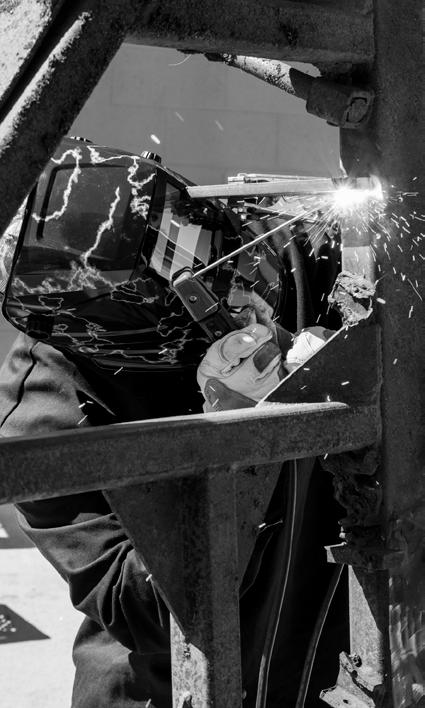
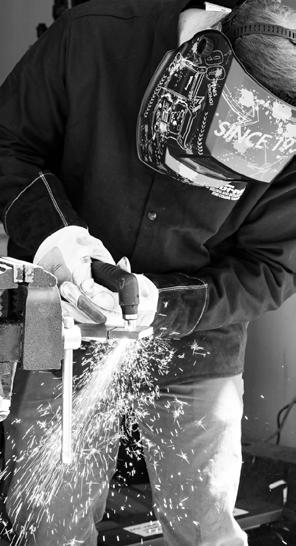


WELDING MADE EASY ® Scan for a chance to win a Forney Easy Weld machine of your choice. Enter By: June 1st, 2024 ENTER TO WIN: Learn more at forneyeasyweld.com New to welding or a career welder? The Forney Easy Weld line has the affordable and portable welders you need for projects big or small. The Forney Easy Weld line offers a range of processes including MIG, Flux-Core, Stick, TIG and Plasma Cutting, all backed by a 1-year warranty.
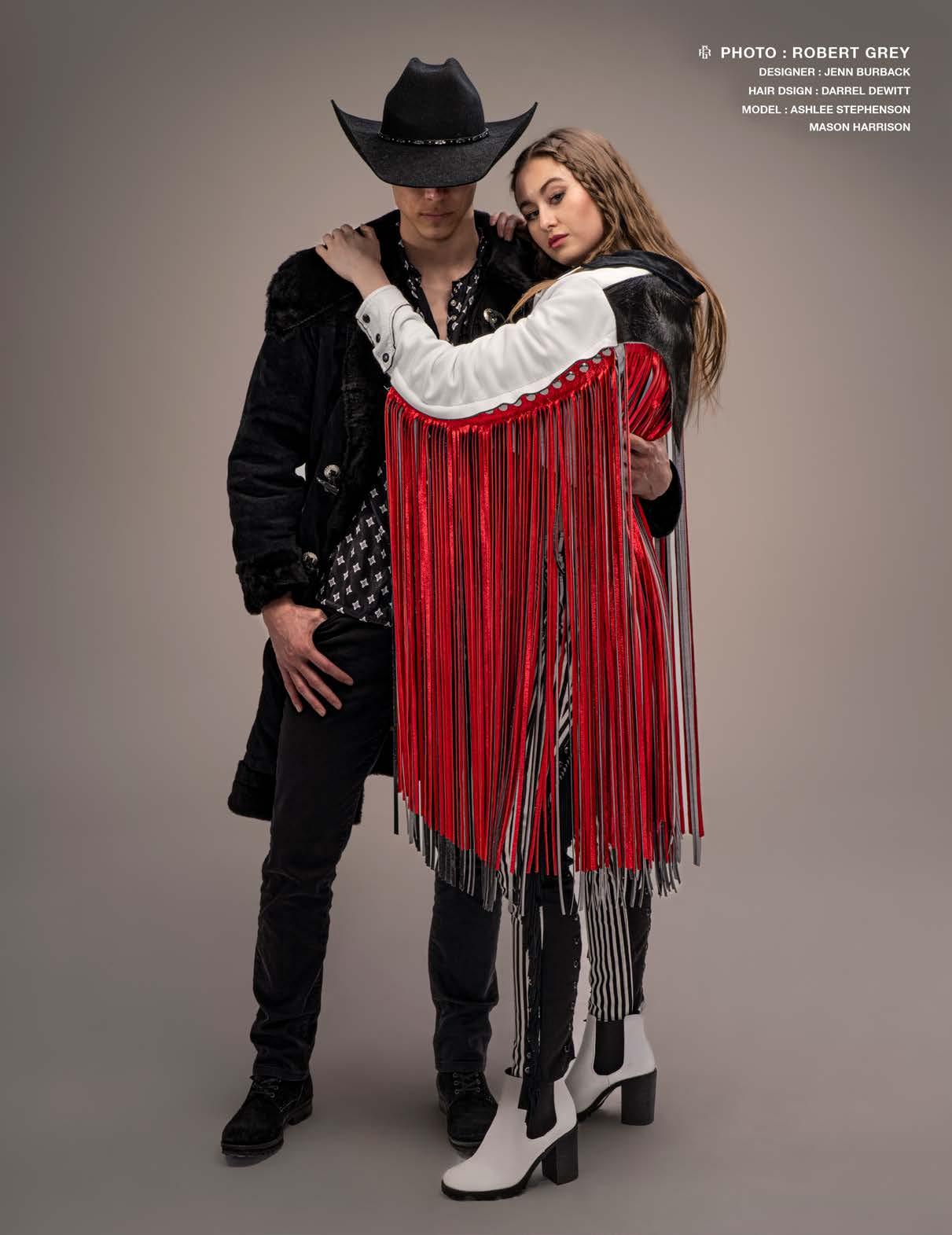
36
Western Fashion Takes a Modern Spin with Designer Jenn Burback
Western fashion is taking on a whole new meaning from a fashion designer based in Denver, Colorado.
BY KRYSTA PAFFRATH
Growing up amidst the quiet suburbs of Denver, Colorado, Jenn Burback was raised in a bustling household consisting of her parents, two siblings - an older brother and sister - and maternal grandparents all under one roof, Jenn’s upbringing was rich with familial bonds and shared experiences. Despite residing near the city’s outskirts, proximity to ranches and farms provided ample opportunity for Jenn Burback to immerse in rural life, often accompanied by her grandfather to observe horses grazing and roaming the nearby fields. Little did she know that those early experiences watching the horses graze would later turn into the inspiration for her career in fashion.
In her early years, she was initially drawn to ballet but found a newfound love for art during high school, alongside interests in color guard and art classes. Senior year brought a pivotal moment as Jenn discovered a passion for fashion design and enjoyed a seasonal job at a haunted house that fueled her dreams
of entrepreneurship. Post-graduation, Jenn found her unwavering commitment to creativity and independence as she began discovering what her adult life would bring her.
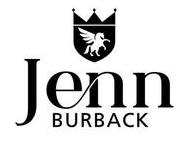
After obtaining a certificate in wedding and event planning, Burback realized that while orchestrating personal celebrations was enjoyable, a career in the field wasn’t entirely fulfilling. It was a journey that led Jenn to contemplate various paths, eventually culminating in the decision to pursue a career in fashion. This revelation propelled Jenn Burback to the Fashion Institute of Design and Merchandising (FIDM) in Los Angeles, California, where she earned an Associate of Arts in Fashion Design, laying the foundation for a promising career in the dynamic world of fashion.
After recently learning about Jenn and her passion for the Western lifestyle and sustainable fashion, I knew I had to sit down with her. I hope you enjoy this interview with fashion designer, Jenn Burback.
moderncowboymedia.com 37
WHERE DO YOU DRAW YOUR INSPIRATION FROM?
I find inspiration all around. I can be inspired by something as simple as a color to more complex avenues like music, nature, or architecture. For me, it usually takes one small thing to trigger my creative flow and have an idea come about that I then want to see come to life. Nature and music are probably two of my biggest influences. I can recall moments where a particular song or moment in a song spoke to me. Even other clothing styles, such as streetwear, evening, western, sustainable, and so on inspire my collections or even oneoff pieces. There is so much to find inspiration in and then to push to break boundaries between what we think should be to what can be.
CAN YOU TELL OUR AUDIENCE A LITTLE BIT MORE ABOUT YOUR MOST RECENT COLLECTION?
My most recent collection, “Cloteel: Wild Horses” debuted in November 2023 on the runway at Denver Fashion Week. “Cloteel: Wild Horses” is a visual story, a telling of dark to light and how one might work through challenging times facing mental health, and it was also a personal story of me getting back to my Western roots.
This collection was highly influenced by Lainey Wilson’s song Wildflowers and Wild Horses. I truly wanted to focus on telling the story of how the darkness of night gives way to the light of day. If you close your eyes and imagine you escaped to the mountains to watch a sunrise, where in the dark of night you don’t have the city light casting a glow, making it almost seem pitch black with the night sky being your only guide. Then find yourself gazing at the rise of the sun as the day breaks and hope seems to linger on the colors of the horizon.
I wanted those who see this collection to feel as though they were transported to the mountain prairies in the middle of the night and get to witness the vivid colors a sunrise has to offer. Then, as a designer I wanted my work and business to reflect my purpose to give back to our communities. This past year I focused on raising awareness for mental health through my work and as I move into my next collection that will be showcased this May, I am still focused on mental health awareness. This upcoming collection is based on the idea of, “A Love Letter to Myself” and truly embracing who you are and falling in love with yourself.
WHAT IS SOMETHING YOU PASSIONATELY WISH PEOPLE KNEW ABOUT THE FASHION INDUSTRY?
Not everything we see or hear from movies or social media portrays the industry in full. Fashion has so many avenues and individuals creating that it can be whatever we want it to be. I also think we forget how impactful fashion can be from our everyday styles to the pieces we pull out for special occasions. It is not just about creating a look, I think it’s about creating change for yourself and influencing those around you.
WHAT OR WHO WOULD BE A DREAM COLLABORATION FOR YOU?
Being a fashion designer I often find myself daydreaming about the pieces that could be made for specific people. When it comes to designers I have been inspired by, I would have loved to collaborate with the late Lee Alexander McQueen or Tom Ford.
As for mainstream, my thoughts immediately go to Lainey Wilson, especially after throwing myself into her music last fall while designing that collection. When I think about the immediate western and rodeo industry, I think Rocker Steiner has such a unique style, that I think it would be a lot of fun to collaborate with him. I’d also love to work with one of the Miss Rodeo America contestants, as they are all incredible and I am always inspired by who they are and where they are going.
Jenn’s Closing Thoughts
I want those who come in contact with my fashion to feel they are helping the greater good and finding a connection to that through fashion. Whether that be connecting with the pieces I am creating and showcasing or the causes I am actively giving back to. I think it is easy to lose touch with where our products come from. Finding the beauty in the personal touches of fashion is what drives me and my brand. I love being able to create quality pieces that create impact and are designed for something personal and bigger than the pieces themselves.
YOU CAN LEARN MORE ABOUT JENN AND HER WORK AT JENNBURBACK. COM, OR ON INSTAGRAM AND FACEBOOK AT JENN BURBACK OFFICIAL.
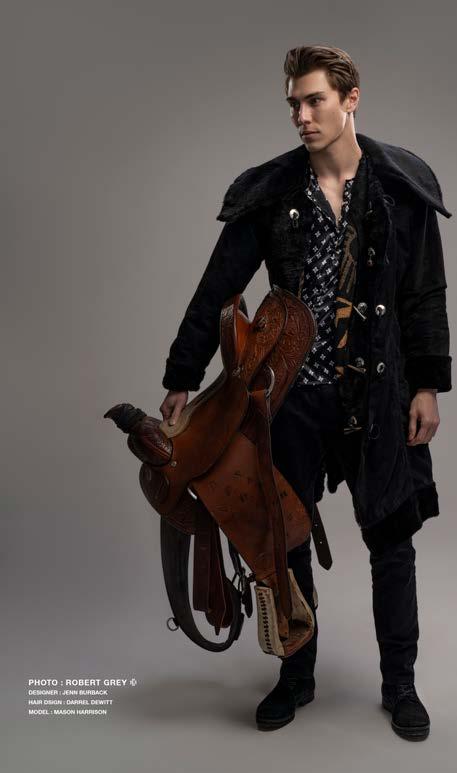

38
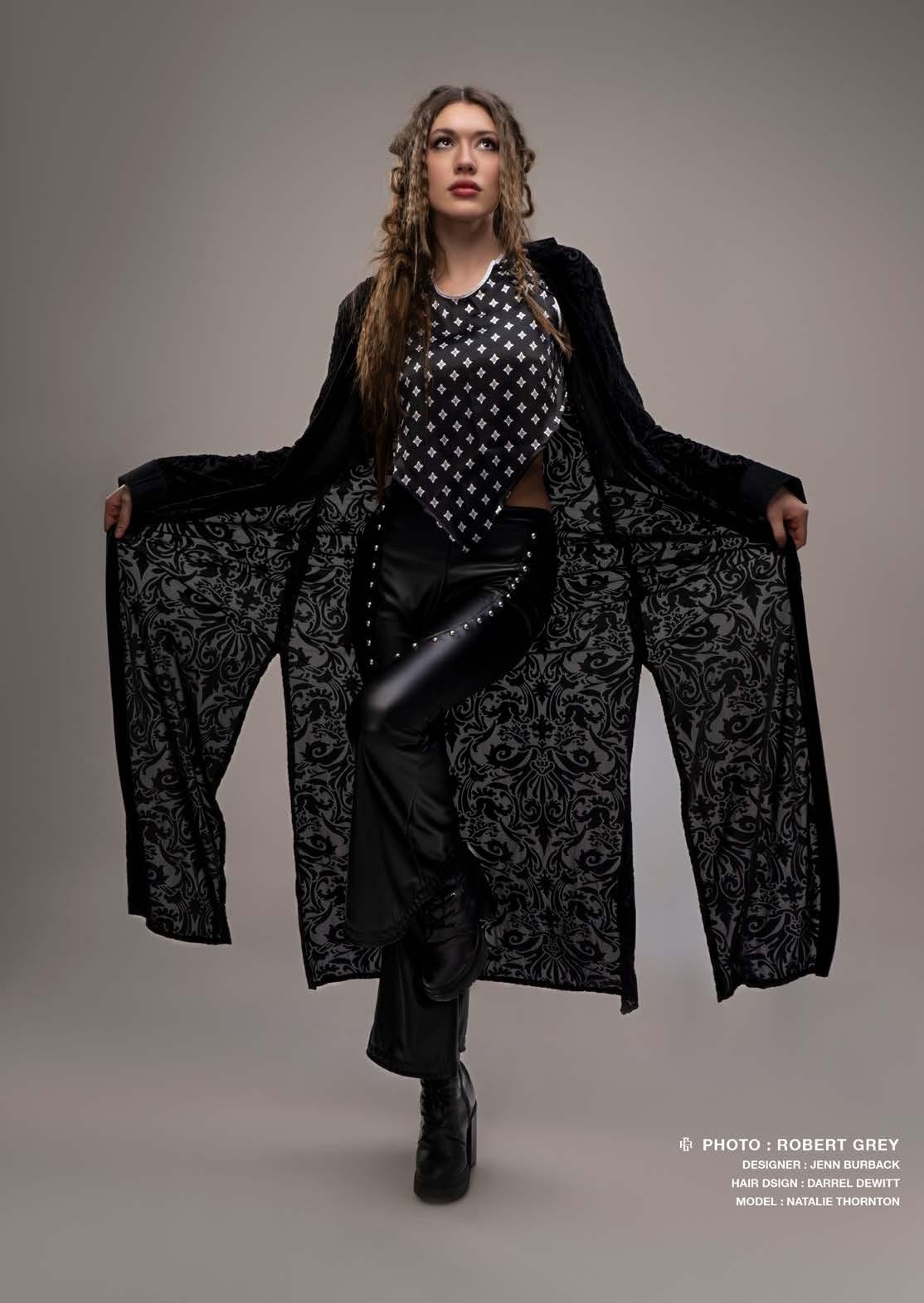
moderncowboymedia.com 39
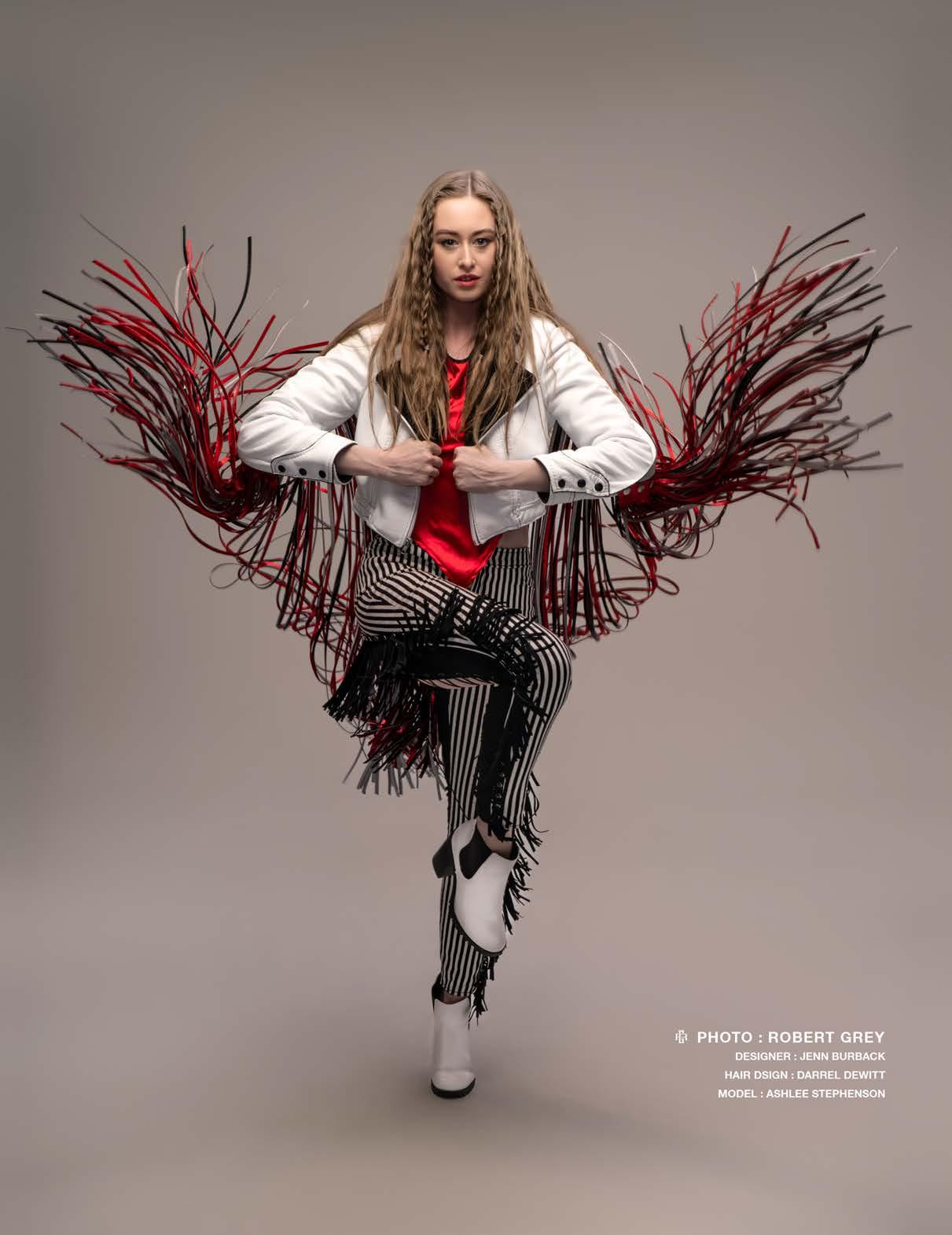
40

moderncowboymedia.com 41

42
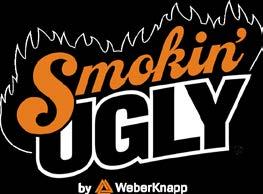

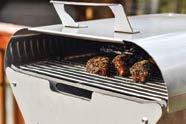
ELEVATE YOUR TAILGATE with the TG Series Grill!

With a stainless steel design, and versatile cooking options you can expand your cooking options on the go. The portable size allows it to travel and transform tailgates, camping, backyard fun and so much more!






UNMATCHED VERSATILITY AND MOTION CONTROL TECHNOLOGY
The TG features a safe, motion-controlled hinge for ultimate cooking control and allows the lid to stay at whatever position it is set!



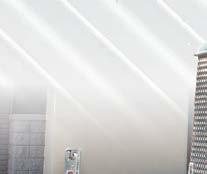

Aluminum Trailers
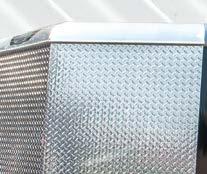



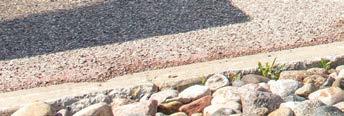



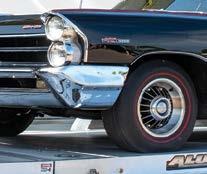





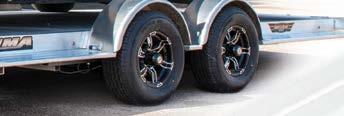





















































GRILL GRIDDLE PIZZA OVEN SHOP NOW
AlumaKLM.com
a
you visit: TAKE FUN ANYWHERE! Whether you’re looking for utility, recreation or fun, Aluma has the perfect trailer for you! Aluma offers a complete line of durable, lightweight and maintenance free aluminum trailers. MADE IN the united states
For
dealer near
One Part YeeHaw One Part MeMaw
WITH EMILY ANN ROBERTS
Learn how this country music star is paying homage to her roots through her music.
BY ROBERT LANG
The title for this feature was aptly named because it’s exactly how Emily Ann Roberts described herself when I first sat with her for this interview. If you have had the pleasure of meeting Emily Ann Roberts, or follow her on social media, then you will know she is a country girl at heart and is a force to be reckoned with.
You may have first seen Emily on the show, The Voice, as a member of Blake Shelton’s team. While she didn’t take home the title in 2015, knocked all of her performances out of the park. Since then, she has had more than 19 million music streams and was named one of Rolling Stone Magazine’s Best Acts of CMA Fest.
Emily grew up on Smoky Mountain bluegrass music along with legends in country music like Loretta Lynn, Dolly Parton, Miranda Lambert, and Cody Johnson. While on tour, she has opened for artists Reba McEntire, Blake Shelton, Sara Evans, David Nail, Josh Turner, Scotty McCreery, and Ricky Skaggs.
Her first full-length studio album “You Can’t Hide Country” launched on September 22, 2023 and she celebrated with an album release party with Alex Miller in Knoxville, Tennessee on September 21, 2023. The album includes her released singles “The Building”, “Infinity”, “He Set Her Off” and “A Whole Lotta Little”, which already shows that she can master everything from fun toe-tappers to serious ballads to revenge songs. The whole album is a celebration of her country music roots.
LET’S TALK ABOUT YOUR YOUTUBE CHANNEL, YOU POST MORE THAN JUST MUSIC VIDEOS THERE DON’T YOU?
Yes! Today was an “all my favorite things” day because I started the day crocheting and then I made my mama a birthday cake because her birthday is on Monday and we’re celebrating this weekend. So yes, those are like my fun creative outlets when I don’t want to think about music.
SO IS MUSIC, NOT A FUN CREATIVE OUTLET?
(laughs) No, it is a fun creative outlet, but sometimes I just want silence so I crochet or cook. It’s a good little break.
I SAW YOU IN SEPTEMBER, HERE AT THE OPRY. IT WAS THE FIRST TIME I SAW YOU PERFORM. AND I WOULD BE LYING IF I DIDN’T SAY THAT I HAD YOUR SONGS
ON REPEAT WHILE I WAS DRIVING OR WORKING. YOUR SONG “WILD” IS ONE OF MY FAVORITE SONGS
BUT CAN YOU TELL ME A LITTLE MORE ABOUT YOUR SONG, “CHICKENS” AND HOW THAT CAME TO BE?
I got married about two and a half years ago and I always like to tell people that it is a love song called “Chickens” because chickens put themselves to sleep when the sun goes down and so do newly married people. I was writing songs with Trent Willman and Paul Overstreet and he brought up the fact I had just gotten married and how around here everyone goes to bed with chickens and that kind of evolved into us writing the song, “Chickens”. IS “CHICKENS” AND THE OTHER SINGLES YOU RELEASED ON THIS ALBUM?
Yes. So the past singles are “A Whole Lot of Little”, “The Building”,

44

“He Set Her Off” and “Infinity” and they all are on the album. Then we’ve got a whole slew of new songs that I’m really excited about. It’s got songs from my entire journey as an artist. I’ve been in Nashville for eight years now and I’ve learned a lot and grown a lot in that time.
Now I’m in this new phase of life where I’m married and then of course, I’ve got my sassy storytelling songs. I really feel like it’s a great representation of who I am.
WHICH IS YOUR FAVORITE SONG TO PERFORM?
I love singing “The Building”, which probably wouldn’t be what people would think I would pick because I love fun songs too. But I feel like that song especially really gets people’s attention and I know my whole heart is in that song. I feel like it’s one of those songs that kind of takes people out of the moment that they’re in and transports them somewhere else. That is the beauty of songwriting and music is it really can transport us to a different time in our lives and bring back memories that we have forgotten. I feel like that song is one of those for me.
WHO ARE YOUR BIGGEST INFLUENCES? DO YOU COME FROM A SINGING FAMILY?
(laughs) I wish I came from a singing family, but no, my mom and dad never sang. My mom would sing me lullabies, but she would never say she’s a singer. My older sister, she’ll sing but you don’t want to hear it and I’m not saying that in a hateful way, that’s what she would say. My grandmother used to sing in the choir, but she passed away when I was young. What I can say is that I come from a family of music lovers, they played a lot of great music for me and I was heavily influenced by the artists that my dad would play for me.
Some of my biggest influences are Dolly Parton, Ricky Skaggs, and Patty Loveless, those would be my top three.
Alison Krauss was a huge influence as well for me. Then as I got older, I got into Miranda Lambert and more into the mainstream country. At my core, I always go back to those traditional songs, the ones I was raised on.
THAT’S AWESOME. IF YOU COULD OPEN OR PERFORM WITH ANYONE, WHO WOULD IT BE?
Hands down, Dolly Parton. I love her so much. I just think she’s adorable and she’s just so cute. I have looked up to her my whole life and from every aspect of the way that she delivers a song, how she writes, and her songwriting is so incredible. If you listen to Dolly’s songs, it’s so diverse, she’s done a little bit of everything and done it so well over her career.
DO YOU CONSIDER YOURSELF A ROLE MODEL IN COUNTRY MUSIC?
Gosh, I don’t know if I would say a role model in country music but I do know that I’m a role model to young girls. I’ve had enough young girls come to my concerts to make me realize that I have to be very careful with what I say and what I do. I always want to be somebody that is a good influence on young girls, because I remember growing up looking up to so many people. We’re all human, we’re all going to mess up and do things that we shouldn’t but, I try really hard to be very careful with that responsibility as being somebody that other folks look up to and want to be a good influence.
To learn more about Emily follow her on social media and go to emilyannroberts.com. Photo credit to Summer Simmons and John Shearer.
moderncowboymedia.com 45
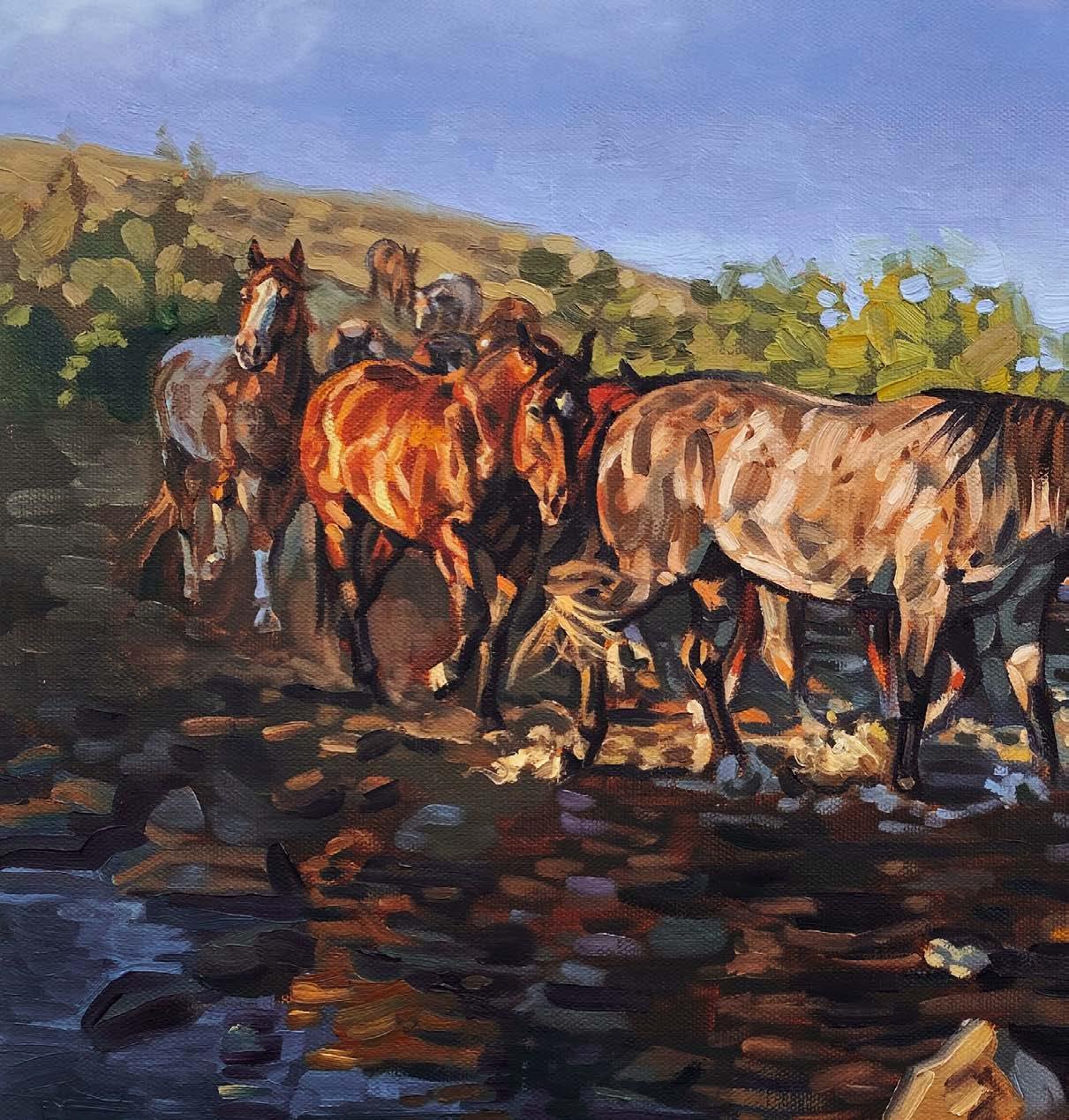
Sarah’s passion for horses goes well beyond the canvas in this Western Arts Q&A feature.
BY KRYSTA PAFFRATH
46
WITH SARAH DEAN ARTS
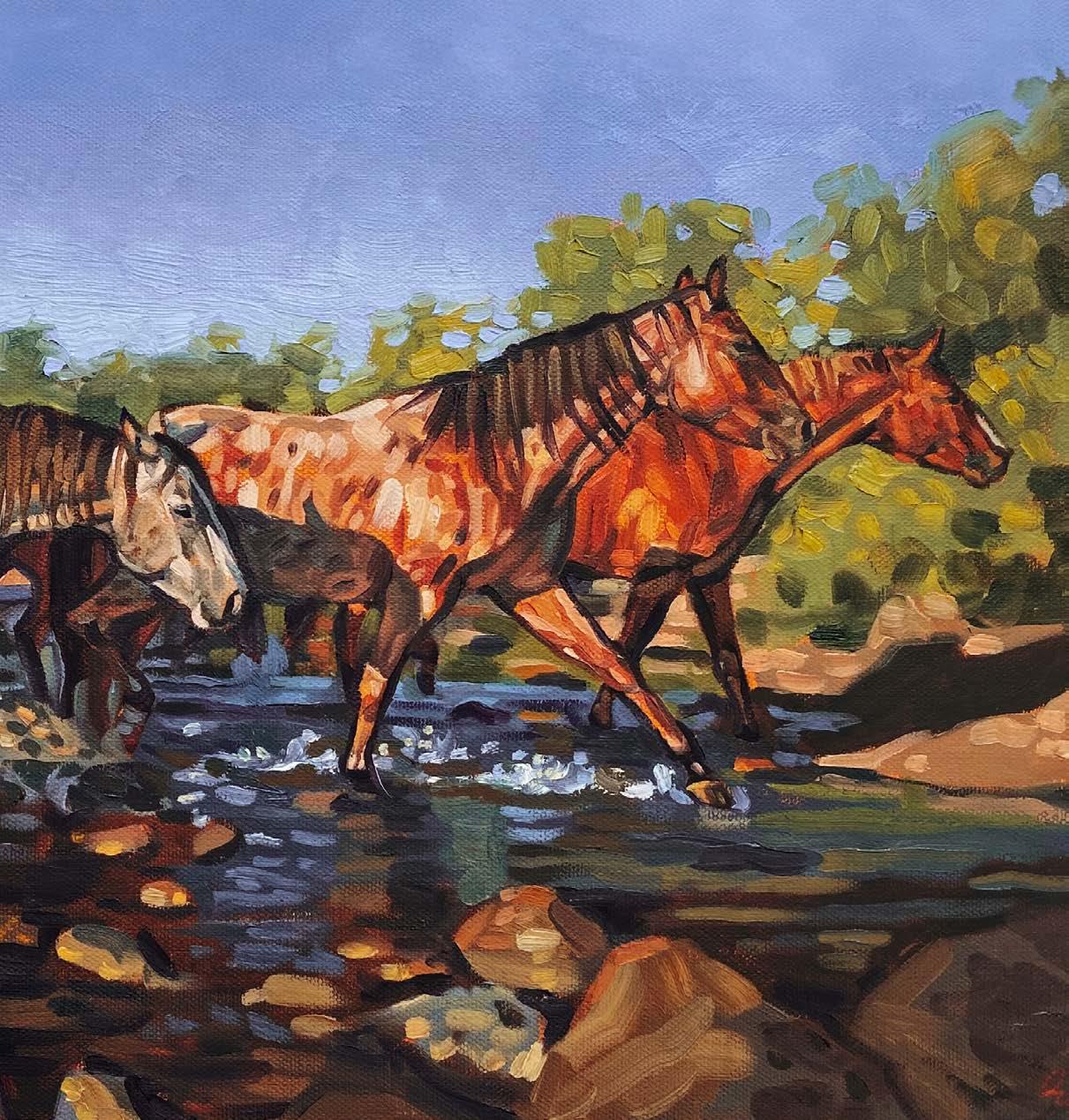
moderncowboymedia.com 47
Q: CAN YOU TELL OUR AUDIENCE A LITTLE MORE ABOUT YOURSELF?
A: I was born and raised in the countryside of Colorado, where I fell in love with both horses and the natural beauty of the land around me as soon as I could form memories. I was lucky to have extremely supportive parents who encouraged me to pursue my passions and spend extra time practicing whatever art medium I was most interested in at the time. Since I was head over heels for the extremely expensive hobby of horseback riding, I spent many years as a working student at various barns in exchange for being around horses as much as possible. In my teens, I took oil painting classes with local artist Judith Dickinson that opened up a whole new world of color and a new way of getting the scenes in my head out into the real world.
Q: GROWING UP, DID YOU ALWAYS WANT TO BE AN ARTIST? THEN EXPANDING ON THAT, WHAT DID THE BEGINNING OF YOUR ART CAREER LOOK LIKE?
A: I always knew that working a regular 9 to 5 desk job was never going to be for me. Straight out of college, I tried training as a tattoo artist, then tried selling hyper-realistic pencil portraits, all the while throwing my hat in the ring of any art show I could find in an attempt to find my path. After many starts and stops, I almost quit pursuing art professionally during the pandemic, deeply frustrated with trying to run a business and discover my artistic voice at the same time. Slowly, I rediscovered my love of oil painting and found that I could build a supportive community online by sharing not what I thought people wanted to see, but what I wanted to share from my heart. Only when I fully embraced my unique style was I able to connect with collectors, and I couldn't be more excited about the direction my art is heading in today.


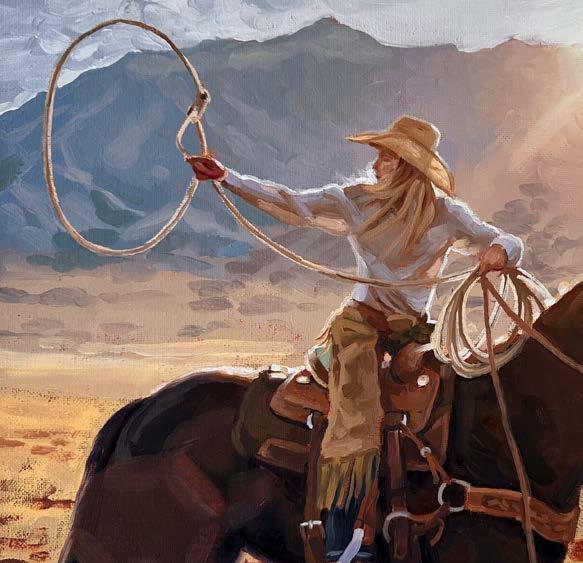
48


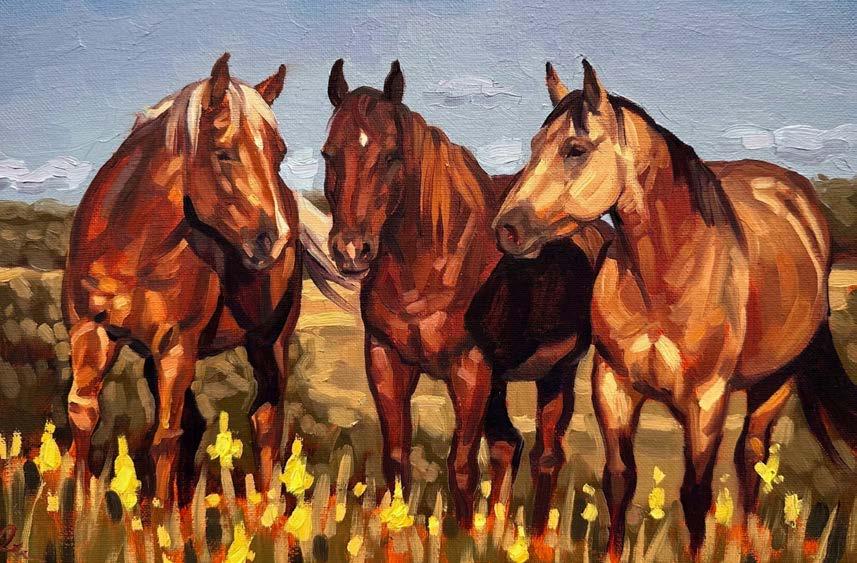
moderncowboymedia.com 49
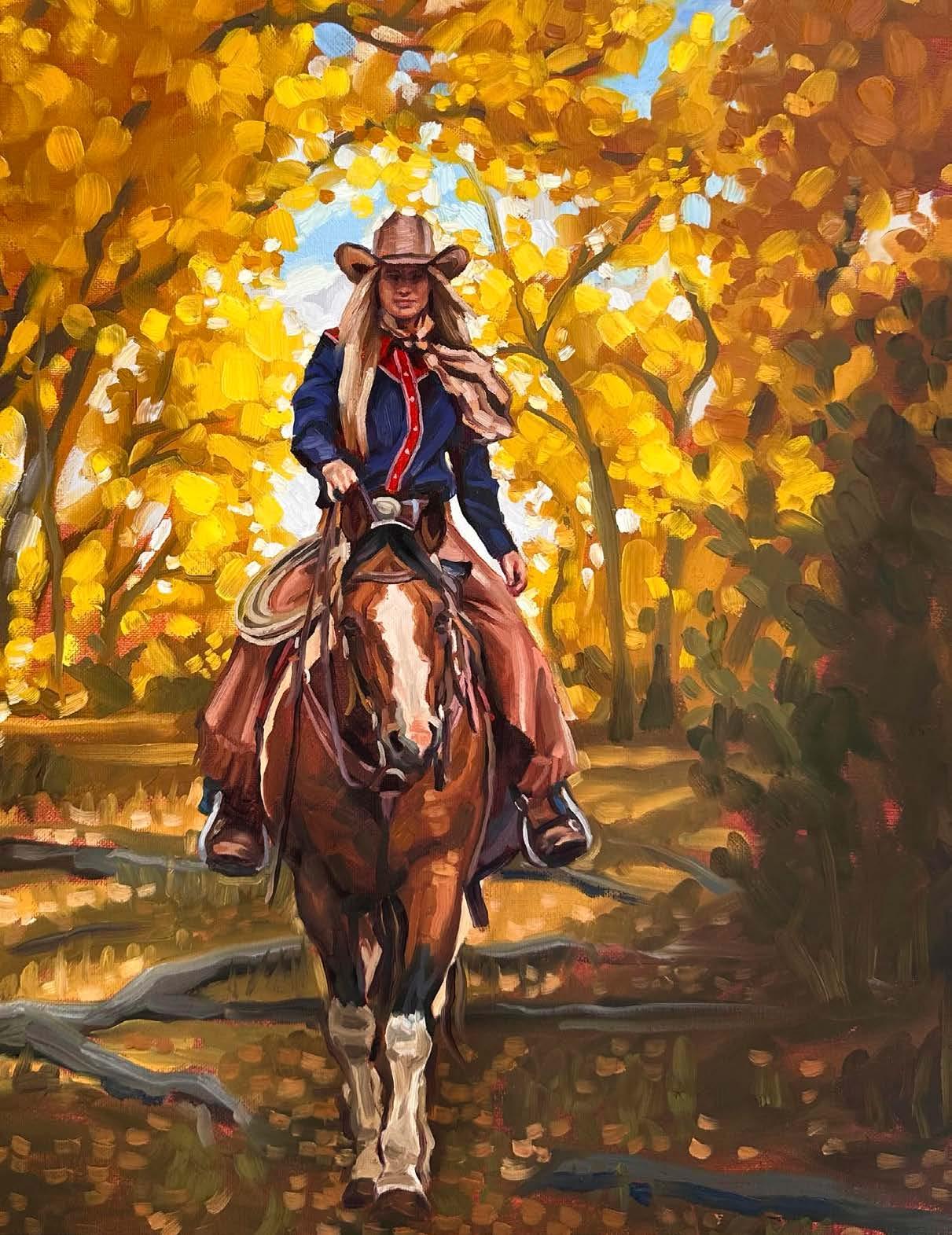

50

Q: WHAT DO YOU DO OR WHERE DO YOU GO TO FIND INSPIRATION FOR YOUR PIECES?
A: It always comes back to horses. Their relationships with each other, to their riders, to the western landscapes - there are endless aspects of horses that I'm deeply in love with, and I never feel at a loss for what to paint next with them as my inspiration.
Q: WHAT OTHER WESTERN ARTIST HAS INSPIRED YOUR WORK THE MOST? OR WHO DO YOU LOOK UP TO THE MOST?
A: It's so hard to narrow it down to just one! I think if I had to, I would say Sophy Brown. The first time I saw one of her pieces I was blown away by her use of color, texture, and the freedom of her brushwork. Her work inspired me to step away from strict realism and embrace a more stylized approach to my own painting.
Q: WHAT DOES YOUR CREATIVE PROCESS LOOK LIKE FOR ONE OF YOUR ORIGINAL PIECES?
A: I like to start with a theme for a collection of paintings, and that gives me direction for the mood and color palette of each piece. I'll spend hours sorting through reference photos and piecing things together in Photoshop until I feel I have the most striking version of the scene I'm trying to create. I'll do a quick concept sketch to make sure everything works well on paper, and when it's finally time to put paint to canvas I feel like I've thoroughly explored exactly what I want the finished piece to look like. Then it's just a matter of getting the paint where I need it to be!
Q: WHAT ARE SOME OF YOUR GOALS FOR THE NEXT 3-5 YEARS?
A: I would like to continue deepening my relationship with my collectors, and I'd like to expand into more highprofile western art shows to get my work seen in person a little more often. The Coors Western Art Show is in my home state, and I'd love to see my paintings hanging there soon!
Sarah’s Closing Thoughts
I'm extremely proud and excited to be taking part in the Cowgirl Artists of America's upcoming show, Women's Work. The show is connecting female artists with working women on ranches to showcase the nuanced stories of women and their contributions to the West. The show opens in August 2024 at the A.R. Mitchell Museum of Western Art, and I can't wait to hang a few new paintings of mine alongside a group of incredibly talented female artists. You can learn more about Sarah and her available pieces at SarahDeanArts.com and you can also follow her on Instagram and Facebook at SarahDeanArts.

moderncowboymedia.com 51
5 Leadership Qualities for Working in the Western & Agriculture Industry
BY KRYSTA PAFFRATH IN COLLABORATION WITH TYLER SCHUSTER
While I was in Fort Worth, Texas for the American Rodeo, I had the opportunity to sit down with Tyler Schuster, a fifth-generation Texas rancher, to chat about what leadership qualities are needed these days for those looking to be successful in the western and agriculture industry. While her official title is, Manager of Leadership Development at Texas & Southwestern Cattle Raisers Association, she refers to herself as a “full-time chaos coordinator”, and on top of wrangling up cattle raisers, she is a lover of western fashion, beef, and podcasting.
Krysta: Let’s dive a little bit deeper into your background, how did you get to where you are today?
Tyler: I grew up on my family’s ranch in Brackettville, Texas, which is just a little community of about 2000 people. At the time, I just assumed that everyone grew up just like me and my mom is actually the rancher in our family. I always say my dad’s all hat, no cattle, and my mom is no hat, all cattle. My parents worked really hard to put my siblings and me through college, which I was thankfully able to do not just once, but twice to get both my Bachelors through Tarleton State and then my Masters at Texas A&M.
During my time at Texas A&M, I interned here at the Texas and Southwestern Cattle Raisers Association and really liked it. After my internship, I was offered a part-time, work-from-home position with them while I was still in grad school. That was about the same time I started my podcast, Basically Famous, and started interviewing people who were “basically famous” to me. As graduation started getting closer, there had been conversations about me possibly coming on full-time, but I hadn’t heard anything after the initial conversation. They ended up coming around and created a position for me as manager of education.
AUTHENTIC
The first quality for me is being authentic. I want to know that who you are on the internet is the same as who you are in person. Generally speaking, for a good leader, I don’t have to worry they’re not the same person because I know they are. For example, my interns know they can come to me and they’re gonna get the truest answer every time. I just think a true leader is authentic, you know what you’re going to get with them and you know what to expect when you work with them.
I’ve now been with the TSCRA since June 1, 2022. I started with just online and in-person education for producers, and then beef quality assurance, which is a nationwide program. Here at TSCRA, we’re focused on the producer, whereas the state beef councils are really focused on the consumer, but we do work hand in hand with them. Last August, I had the opportunity to transition to another new role as manager of leadership development, and within that role, I oversee all programming for people under 40. So essentially, I’m in charge of our next-generation efforts. We’ve had a lot of great success in the programs we’ve implemented, but also in fundraising. We’ve created a 501c3, called the Leadership Development Foundation, and it helps fund all the efforts I do. So every program we’ve created geared towards producers under 40 has been my passion project. I never knew I had a huge passion for the next generation and never thought I’d be a rancher but I’m still super active on my family’s ranch when I’m not here at the office working.
Krysta: With the premise of the Modern Cowboy Magazine, we are really striving to find people and stories that exude values like being a trailblazer, being bold and brave in their own right, regardless of what that looks like. It sounds like you’ve had to take some pretty brave steps in your life and career to get to where you are.
I would love to hear what your top five qualities are for what you consider to be a great leader. What are the gritty values that you think a leader needs to have to be successful in the western and agriculture industry?
Tyler: To start, I think everyone is capable of being a leader, age is just a number and I really believe that every person has the opportunity to influence the room they’re in. Below are what I believe are the top five intangibles to be a great leader:
DISCIPLINED
Second, I think leaders should be disciplined. Successful people have programs and routines in place for their day-to-day lives. For me, I get up at about 5:30 in the mornings so I can go work out at 6:15 and then I’m in the office by 8:15. Then I’m here at the office until four or five depending on what I’ve got going on. The morning routine is critical for me because I know I’ve started the day on the right foot. You also have to be flexible enough to know that in the seasons when those things don’t happen, you can be disciplined enough in other areas of your life to know that it’s all going to be okay and you can keep the boat moving in the right direction.

GRITTY
The third thing leaders need is grit. There’s something about being tough in the workplace. Maybe not as much being physically tough as it is being mentally tough, but you have the grit to persevere, get through the day, and do the hard things. We all have to do jobs we don’t want to do sometimes and you have to have a little grit to get through it.
52

PUNCTUAL
A good leader is always on time, they’re punctual. A good leader will respect your time, just as you respect theirs. I think it’s kind of a lost art in the world we live in but if you ask me for my time, I am going to get it blocked off on my calendar and show up as my most present self.
PERSONABLE
My fifth and final thing would just be that a great leader has to be personable. You should be easy to go up and have a conversation with, easy to talk to, and make people feel heard. Then taking that a step further, you should be able to execute whatever you promise in that conversation. Whether that is you agree to send a bio or a headshot, then you get it done. I truly think that these five traits can be applied to anything you do these days, whether you’re in the office, on the ranch, or going down the road, these are five things that I see every day through my podcasts, my social media channels, and here in the office that make an outstanding leader in our industry.
About Tyler Schuster
TYLER’S ROOTS RUN DEEP IN agriculture. As a fifth-generation rancher from Brackettville, TX, she has been blessed to grow up in that way of life. She grew up barrel racing, roping, playing sports, and being involved in 4-H and FFA. She graduated from Tarleton State University in May of 2020 with a Bachelor of Science in Agricultural Services and Development. Following her time at Tarleton, she attended Texas A&M University to pursue a Masters of Public Service and Administration. After graduation in May of 2022, she made her way to Fort Worth to pursue a career in agriculture.
She currently works in beef education and focuses on working with the next generation of cattle raisers. In her spare time, she produces a podcast focused on women in ag called Basically Famous where she enjoys speaking to groups across the state when time allows.
You can learn more about Tyler and her podcast at TyleKSchuster.com
moderncowboymedia.com 53
FROM THE
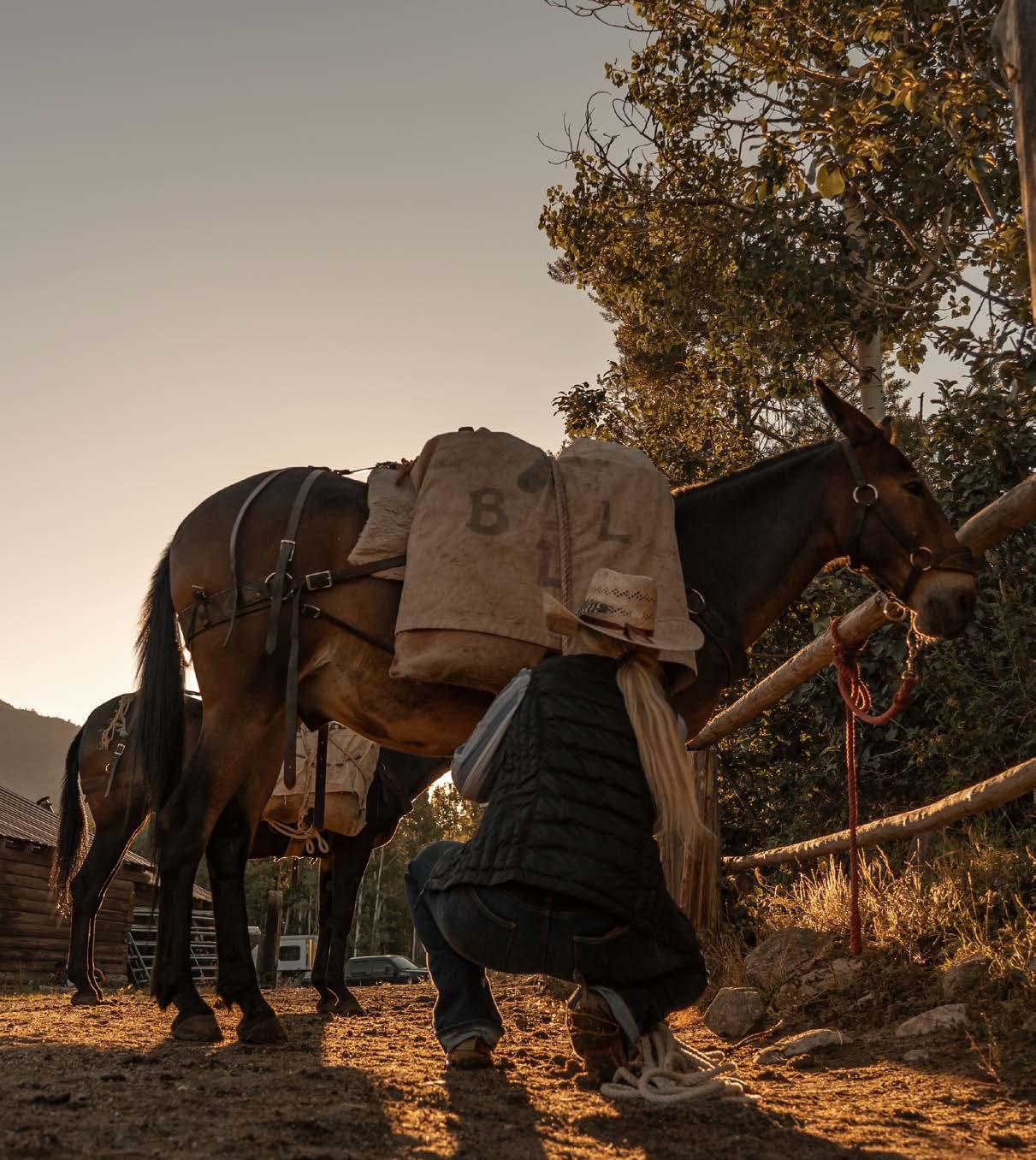
54

The BonaFide Cowboy
Western Lifestyle & Commercial Photographer, Kenzie Holmberg has made a living as a self-taught commercial photographer, but how did she get there?
One look at the BonaFide Cowboy’s Instagram page and you are immersed in a world of edgy and moody cowboys and cowgirls doing what they do best. What better way to launch the inaugural issue of Modern Cowboy Magazine than sitting down with Western Lifestyle Photographer, Kenzie Holmberg, to chat about the modern era of Western lifestyle photography as well as learn more about her journey to how she got to where she is today.
CAN YOU TELL OUR AUDIENCE A LITTLE MORE ABOUT YOURSELF?
I have always been very artistic and was never the athletic type of kid. I actually grew up with an autoimmune disease, so it changed a lot of my childhood but I never let that define what I did with my life. When I reflect on it now, it did shape a lot of who I was, how I look at life, and how I do things.
As long as I can remember, I’ve always had a passion for art. I love to draw and paint but I don’t know if I would say I am naturally gifted but that passion for art followed me into college. I went to the University of Wyoming and throughout my entire college career, I really didn’t have a set idea of what I wanted to do as far as a career. I knew that I loved the Western industry and rodeo and I wanted to work in that industry but I just didn’t know in what capacity that would look like.
Fast forward, I graduated college and ended up in Montana where I worked for a large nonprofit and worked for them for about six months. It was a strenuous, time-consuming job and I had a lot of responsibility but I loved it. During my time at that job, I realized I really wanted to start focusing on a side hustle that I had been building for a while, which was doing some graphic and web design for some rodeo athlete friends. I ended
moderncowboymedia.com 55

up picking up a camera my senior year of college but I always just thought of photography as something that could help like my graphic and web design side hustle.
So I started building my photography portfolio with no formal training; everything was just trial and error for me. Then COVID hit and that essentially kickstarted my official photographer career. So I kind of just dove into it head first and luckily for me it paid off. Now it is my full-time career and I absolutely love it.
YOU’VE WORKED WITH SOME OF THE LARGEST NAMES IN THE WESTERN INDUSTRY, IS THAT
WHAT YOU HAD ALWAYS ENVISIONED DOING IN YOUR PHOTOGRAPHY CAREER?
I think if you had told me years ago that I would be doing what I do now I probably would have laughed. When I started photography, it was more just complimentary to designing websites because I didn’t have to pay somebody else to take the photos. In the beginning, I loved the Western lifestyle photography component but I didn’t know how to monetize it so I could do it for a living. One day, I was flipping through a magazine and looked at some of the ads and I went, “This is Western lifestyle but people probably have

to pay for these”. So I decided to try to see if I could work in the commercial space even though I had no idea where to start.
I made a lot of mistakes and I did a lot of free work in the beginning that I probably shouldn’t have but I’m glad I did it for the experience of all of it. I’m thankful that some of the brands that I’ve worked with took a chance on me back then. These days, I have a variety of clients from a lot of different industries. I don’t know very many people who get to be as creative as I get to be with my art and have clients who trust me to build a voice in my space that I hadn’t had before.
56
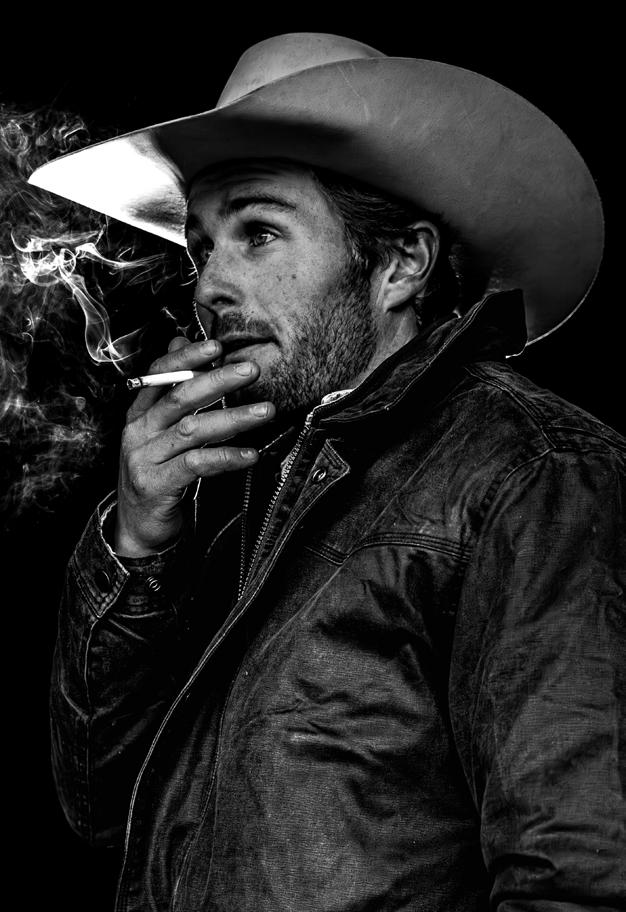


WAS THERE A KEY TURNING POINT IN YOUR BUSINESS/CAREER THAT MADE A HUGE DIFFERENCE FOR YOU MOVING FORWARD OR SOLIDIFIED YOUR OFFERINGS?
One of the first memorable compliments I ever got that solidified my love of Western lifestyle photography, was after I took some cool photos at a ranch bronc riding. It was the first time I had gotten a lot of traction on one of my photos and people were saying that my art looked like a Western painting. That was one of my first memorable moments where I was like, “Yes! That’s what I want to evoke.” The second major turning
point was COVID because I had to decide whether to go all in on my business or not and I haven’t looked back since.
CAN YOU DESCRIBE YOUR CREATIVE PROCESS?
My process is different for every shoot but I don’t have a set creative process and I actually heavily rely on models to give me inspiration as we go. Some of the models I’ve worked with are professionals but most of the people I use are real, everyday people. I’ve had my parents and grandparents model for me before. I have friends who are just cowboys that I suckered into photoshoots with the bribe of beer later. I like having
the real people element because my clients appreciate that they look like their target audience. The photos end up coming off as more relatable because people can see themselves in my photos rather than just seeing professional models.
I pride myself on keeping authenticity at the forefront of everything I do. That even comes through with the tack and the equipment I put on horses. You will not see tack put on incorrectly and you will not see subpar-looking horses at my shoots.
Then there’s choosing a location that I know is going to highlight my client’s products. Most of my shoots now are not staged.
moderncowboymedia.com 57
For example, I will take photos of real branding, or capture someone training horses or feeding cows. I try to bring as much of the lifestyle component into it as I can and just set people up to thrive in their natural environment. The results from this leave readers with a better feeling than what you see in your typical corporate magazine ads. Sometimes things are just so avant-garde that it makes it hard to be relatable and I think we live in a society that craves authenticity because people are constantly being sold to.
WHEN PEOPLE VIEW YOUR WORK, IS THERE A CERTAIN WAY YOU WANT PEOPLE TO FEEL OR TAKE AWAY FROM YOUR PHOTOGRAPHY?
I tend to have a moodier style than most but I want people to see the beauty and simpler side of this lifestyle. I love playing with texture. So incorporating old abandoned buildings, the wrinkles of hard work on older folks and just really capturing the grit of the moment. As I said, my models are real people, so I want them to feel like I’ve captured the essence of who they are. Then on the opposite end of that, I want people viewing those photos to feel like they know them.
A great example of this was when I shared a short video that I took of my grandmother in some blue suede boots during a photo shoot. And when I shared it on my Instagram, it was just like out of the woodwork, there were 1000s of comments that were like “I feel like I know her” and “I want to be like her when I grow up”. The funny thing was that she wasn’t even talking in the video but I think people were able to fall in love with her just through that clip.
Then the second one was a video of a man named Joe. I was working on a Cinch campaign at the time and I had somebody nominate him to model for me. He’s an older Hispanic gentleman and he just told the coolest stories. So I had a friend capture some video during the shoot and later, when I went to share a teaser, I received a lot of the same kind of comments as my grandmother’s video. The comment section was filled with “I love stuff like this” and “I love these stories”. People were relating to him so much and it was crazy how much it brought people together. Going back to how I want people to feel when they see my work, I would love all of my photos or videos to bring people together like that. I also want to romanticize the Spirit of the West but not in the way that Hollywood has portrayed or overdramatized it. I want people to see the resilience, the grit, and the heart behind the people in this lifestyle.

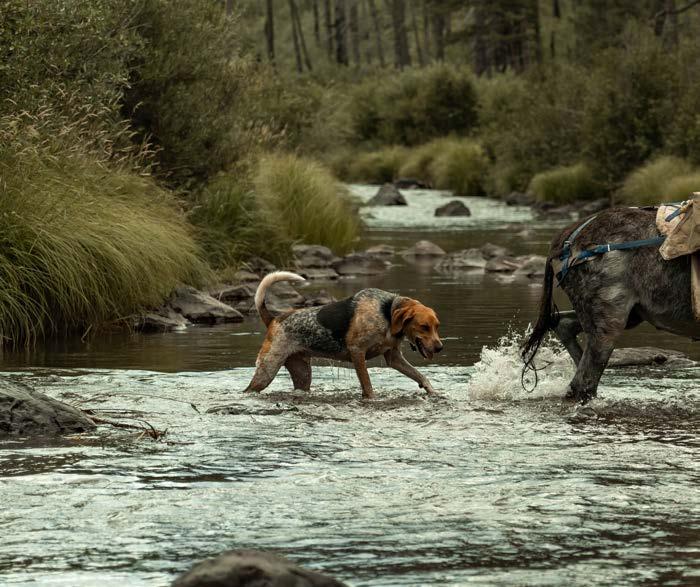
58


HOW DO YOU THINK WE CAN MAKE THE WESTERN INDUSTRY MORE ACCESSIBLE TO PEOPLE OUTSIDE OF IT? AND IS THAT SOMETHING WE SHOULD BE DOING?
This is something that we, as an industry, have struggled with for years now. I think what it comes down to is education. We are some of our biggest enemies because, to an extent, we’ve played into the stereotypes people give us. The PRCA and the PBR do a great job, they have rules and advocate for athletes and animals but when it comes down to it, PETA and other animal rights activist groups still do a far better job at marketing to the general public than we do. This is the tough part of our industry because it has to start with us and I think we have this social responsibility to keep our culture alive. But if we want to do that, it’s going to take effort from everyone.
New people coming in are going to have questions, they are going to have new ideas and that’s the beauty of this industry growing, but we can’t be putting people down and making them feel bad for not knowing anything because we all had to start somewhere. With all of the attention our industry has been getting, it’s natural to want to protect it but protecting it doesn’t mean excluding other people from it; it means teaching them how to be included in it. It’s not going to happen overnight, but I think it starts with individuals, it starts with you. You might not feel it, but generations later, your actions could have a huge impact on how the cowboy industry stays alive.
WHEN YOU THINK OF “COWBOY” AS A CULTURE, WHAT DOES THAT MEAN TO YOU?
I’ve lived in four different states now where cowboy culture is different in every state. Cowboy culture to me, goes beyond the cowboy hat. It’s the character, the love of the land, and the appreciation for the animals. It’s more than just a job title and a way of life. It’s the people and the stories that make it up.
Closing Thoughts
THIS WAS SUCH AN ENLIGHTENING AND refreshing conversation with Kenzie. I think the biggest takeaway is that if we want our industry to thrive, it’s our responsibility to make that happen. Modern Cowboy Magazine is dedicated to sharing stories of trailblazers just like Kenzie to encourage the growth of our industry and culture. To learn more about Kenzie and her specialty in Commercial Western Photography, find her online at BonaFideCowboy.com. You can also find her on Instagram, Facebook, and YouTube @BonaFideCowboy.

moderncowboymedia.com 59
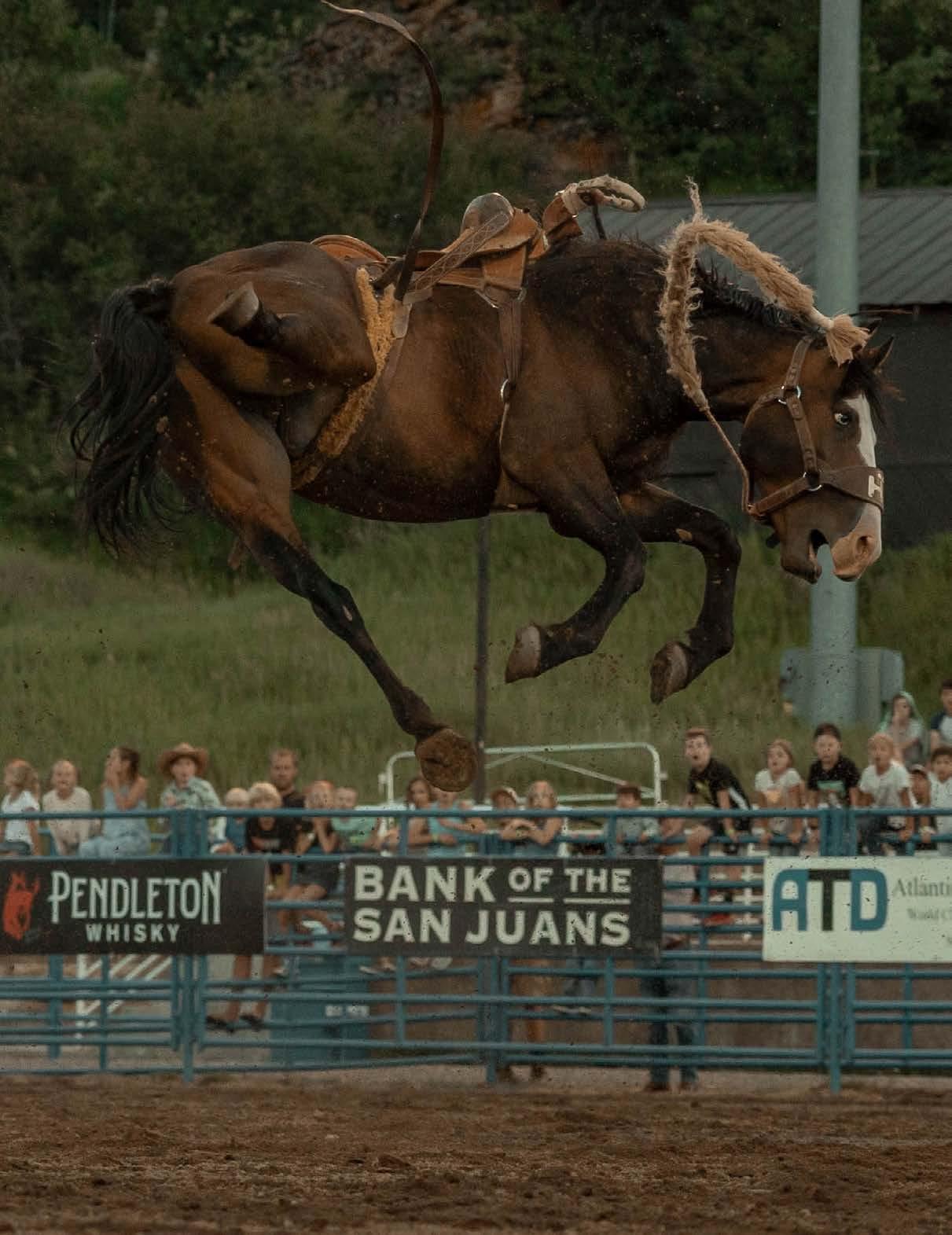
The BonaFide Cowboy BonaFideCowboy.com @BonaFideCowboy



The BonaFide Cowboy BonaFideCowboy.com @BonaFideCowboy
TOBY KEITH
Celebrating seven Timeless Hits from the Country Icon
BY KRYSTA PAFFRATH
In my eyes, Toby Keith will always stand as one of country music’s most enduring and beloved figures. With a career spanning decades and a catalog filled with hits that have left an indelible mark on the genre and the country music industry, Toby has left a hole in the hearts of fans across the globe. From anthems of patriotism to heartfelt ballads and rowdy party tunes, Keith’s songs resonate with audiences worldwide, capturing the essence of the Cowboy American spirit. As we celebrate his remarkable legacy, let’s journey through seven of his best songs that continue to stand the test of time.
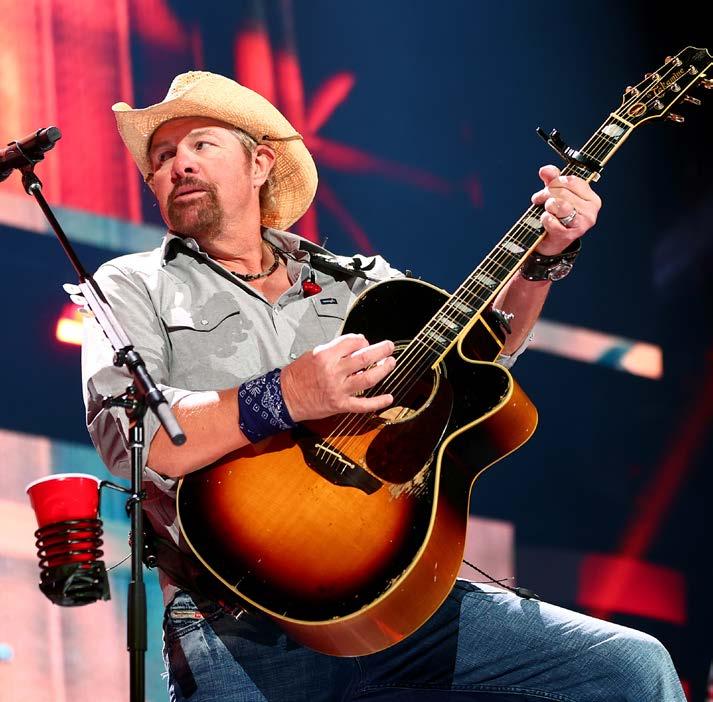
In fact, after his passing, Toby Keith made history one more time as the Singer-songwriter made Billboard chart history as the first artist to claim nine spots in the top 10 of the Country Digital Song Sales survey. I’ll raise a red solo cup to that. I hope you’re having a beer in heaven with the best of them.
1. “Should’ve Been a Cowboy”
Released in 1993 as the debut single from his self-titled debut album, “Should’ve Been a Cowboy” catapulted Toby Keith to superstardom. With its infectious melody, nostalgic lyrics, and Keith’s distinctive baritone vocals, the song became an instant classic and remains one of his signature hits to this day. Its success paved the way for Keith’s illustrious career and set the stage for many more chart-topping hits to come.
2. “Courtesy of the Red, White and Blue”
A powerful anthem of patriotism and resilience, “Courtesy of the Red, White and Blue (The Angry American)” was released in 2002 on his “Unleashed” Album, in response to the September 11 terrorist attacks. Fueled by raw emotion and unapologetic pride, the song struck a chord with listeners across the nation and became an anthem for the American spirit. With its defiant lyrics and stirring instrumentation, it solidified Toby Keith’s status as a voice for the people and remains a timeless tribute to the courage and sacrifice of the men and women in uniform.
3. “American Soldier”
Continuing his tradition of honoring the armed forces, “American Soldier” pays tribute to the brave men and women who serve their country with unwavering dedication. Released in 2003 as a single from his album “Shock’n Y’all,” the song resonated deeply with military families and civilians alike, capturing the essence of the sacrifices made by those who defend freedom. With its heartfelt lyrics and soul-stirring melody, “American Soldier” stands as a poignant reminder of the courage and commitment of America’s finest.
4. “How Do You Like Me Now?!”
With its infectious hook and irreverent attitude, “How Do You Like Me Now?!” became a smash hit for Toby Keith upon its release in 1999. The
song’s tongue-in-cheek lyrics tell the story of a man who achieves success and seeks validation from a former flame who once doubted him. Its catchy chorus and Keith’s swaggering delivery struck a chord with listeners, making it one of his most memorable and enduring hits.
5. “Beer for My Horses” (feat. Willie Nelson)
A collaboration with country legend Willie Nelson, “Beer for My Horses” is a rollicking anthem that celebrates the simpler pleasures in life. Released in 2003 as a single from Keith’s album “Unleashed,” the song combines infectious melodies with witty lyrics and features Nelson’s iconic vocals alongside Keith’s own. With its catchy refrain and infectious energy, “Beer for My Horses” became a fan favorite and remains a staple of Toby Keith’s live performances.
6. “I Love This Bar”
“I Love This Bar” is a feel-good anthem that celebrates the camaraderie and sense of community found in a neighborhood bar. Released in 2003 as a single from his album “Shock’n Y’all,” the song’s upbeat tempo, catchy chorus, and playful lyrics struck a chord with listeners, making it a hit on country radio and in honky-tonks across America. With its infectious energy and sing-along appeal, “I Love This Bar” captures the essence of Toby Keith’s signature style and enduring appeal.
7. “Red Solo Cup”
A modern-day party anthem, “Red Solo Cup” is a lighthearted tribute to the iconic plastic party cup. Released in 2011 as a single from his album “Clancy’s Tavern,” the song’s humorous lyrics and infectious melody became an instant hit with fans, earning widespread acclaim and becoming a viral sensation. With its catchy chorus and tongue-in-cheek humor, “Red Solo Cup” embodies the fun-loving spirit of Toby Keith’s music and continues to be a favorite at parties and tailgates everywhere.
As we celebrate Toby Keith’s remarkable career and contributions to country music, these seven timeless hits serve as a testament to his enduring talent, creativity, and undeniable impact on the genre.

64

SUBSCRIBE AT MODERNCOWBOYMEDIA.COM
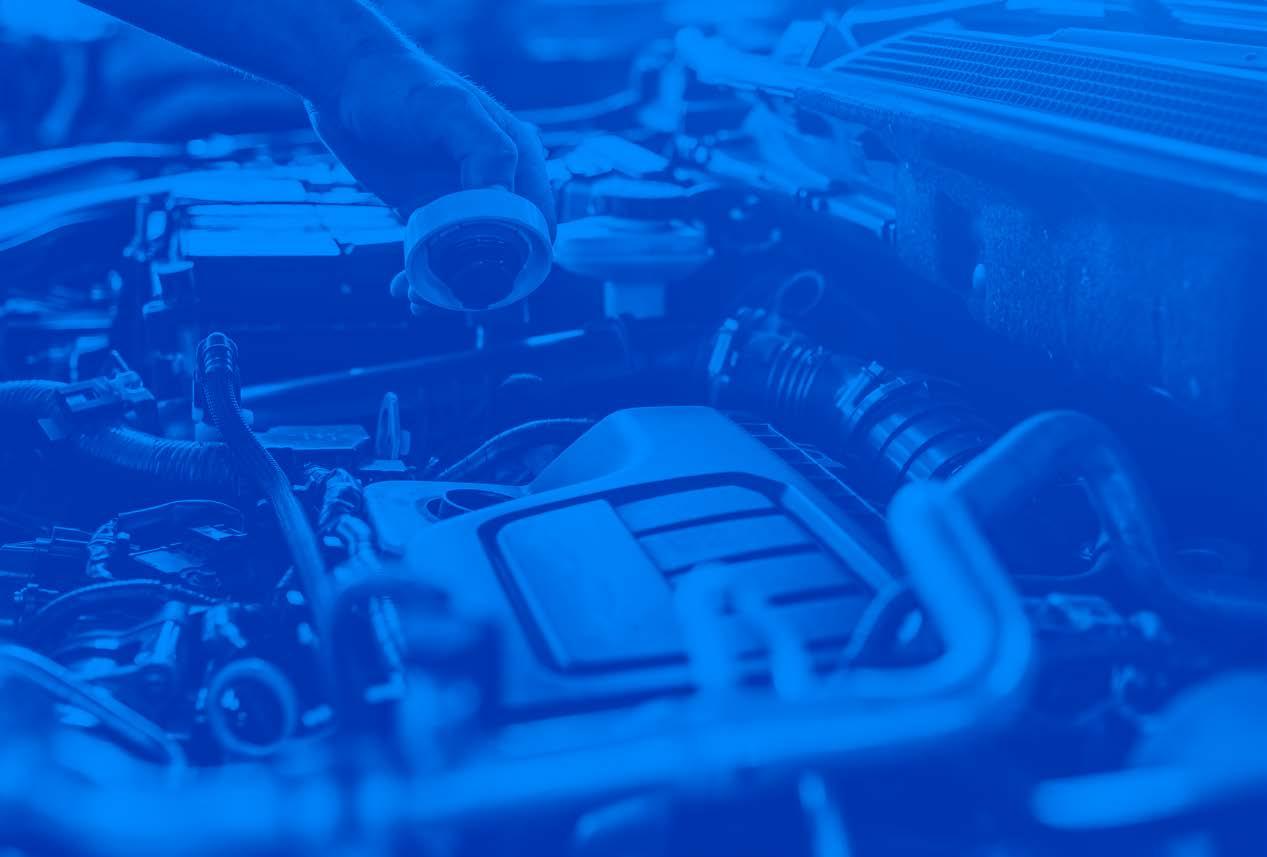

• Simple to use - Just Shake, Pour & Go!
• Can be Added to a Hot or Cold Engine*
• Can be Added to the Overflow Tank •
• With Anti-Rust Protection • • Money Back Guarantee •







WARNING/Caution: Take care before opening the cooling system when engine hot as it may be under pressure and could cause injury. Always consult a qualified mechanic before proceeding. If in doubt wait until engine cools or add via overflow tank. MADE IN THE USA kseal.com ULTIMATE PERMANENT HEAD GASKET REPAIR AND MOST FINE RETAILERS FIXES HEAD GASKETS & ENGINE BLOCKS EASY TO
RAPID
*
USE
RESULTS
•
•
Now
Available at






































































































































































































































































